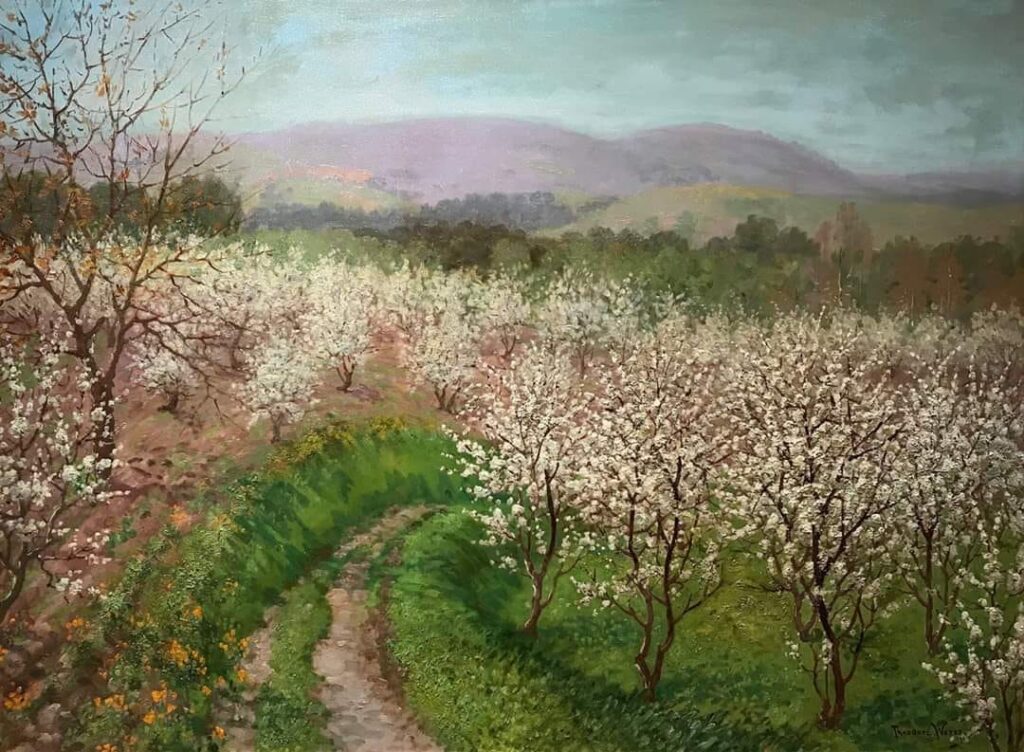
This is a story about California’s agricultural heritage that sprang forth several generations ago when European immigrants sought new opportunities in the Golden State. At first, these adventurous men and women were lured by the discovery of gold. Soon after, they were compelled by the generous natural resources: California’s beautiful climate, rich soil, and plentiful water to invest and stay. Along with their determination to work the land, the “fruits of their labor” allowed these family farmers to prosper, the agricultural economy to grow, and in a very short time, especially within the Santa Clara Valley, for their fruit products to find markets and renown around the world. To quote Dickens, “It was the best of times...” Looking back upon the Valley of Heart’s Delight origin story, with only fragments of this glorious past existing today, I still find beauty, a fruitful heritage, and connection to the past. The fabric of what remains is fragile though, and the changing climate as well as political and economic forces could bring a swift end to this history. Please join me in imagining a better future where fruit orchards thrive in our evolving urban region.
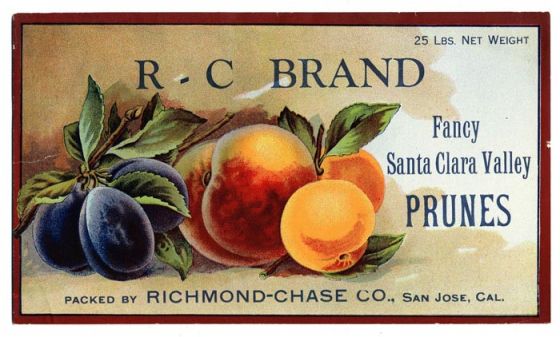
Spring melts into summer bringing the much-anticipated fruit season. In the orchards, a splendid cherry crop ripens. Not long after the cherries, the beloved Santa Clara Valley Blenheim apricots ripen for picking sometime between Father’s Day and the 4th of July. When the apricot harvest finishes, about a month later in August, the French prunes reach their dusty purple perfection. These are the holy trinity of fruits that made the Valley of Heart’s Delight famous around the world for its extraordinary beauty and bounty.
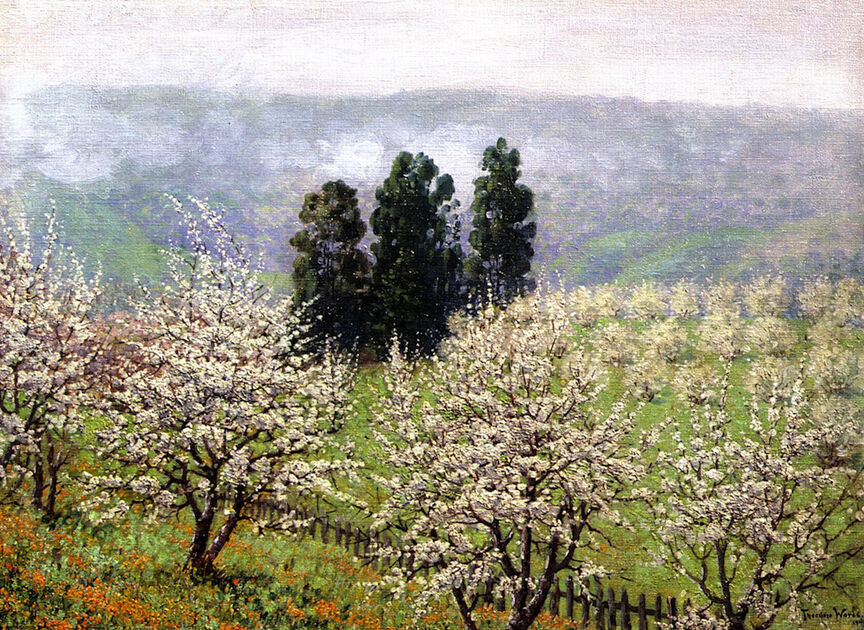
For more than a century, from the 1850s until the 1970s, the Santa Clara Valley was dominated by orchards producing every kind of stone fruit, walnuts, and almonds. For many of us today, memories of the orchard trees in every season are vivid in our minds and the ripe fruit flavors on our taste buds. It melts our hearts to recall the vast orchards that spread across the Valley, carpeting it with spring blossoms and the explosion of vividly colorful ripe fruit come summer. Many others who arrived more recently have certainly heard about the Santa Clara Valley that came before “Silicon Valley”, and may also appreciate the quality of fresh local fruit sold in season at farmers markets. Because there are so few remaining orchards, it takes some effort and imagination to develop an emotional connection to the region’s fruit orchard heritage. Across the hop scotch pattern of orchards in the Santa Clara Valley today, the work to produce top quality fruit continues and so does the opportunity to appreciate and protect this dwindling resource!
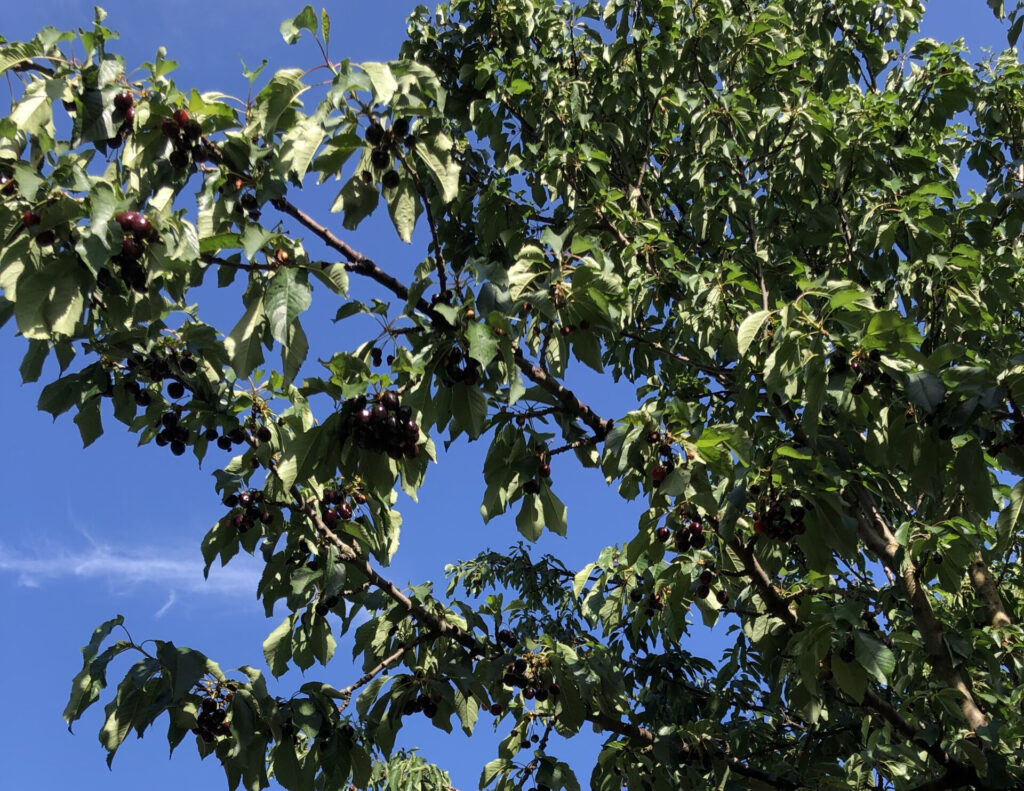
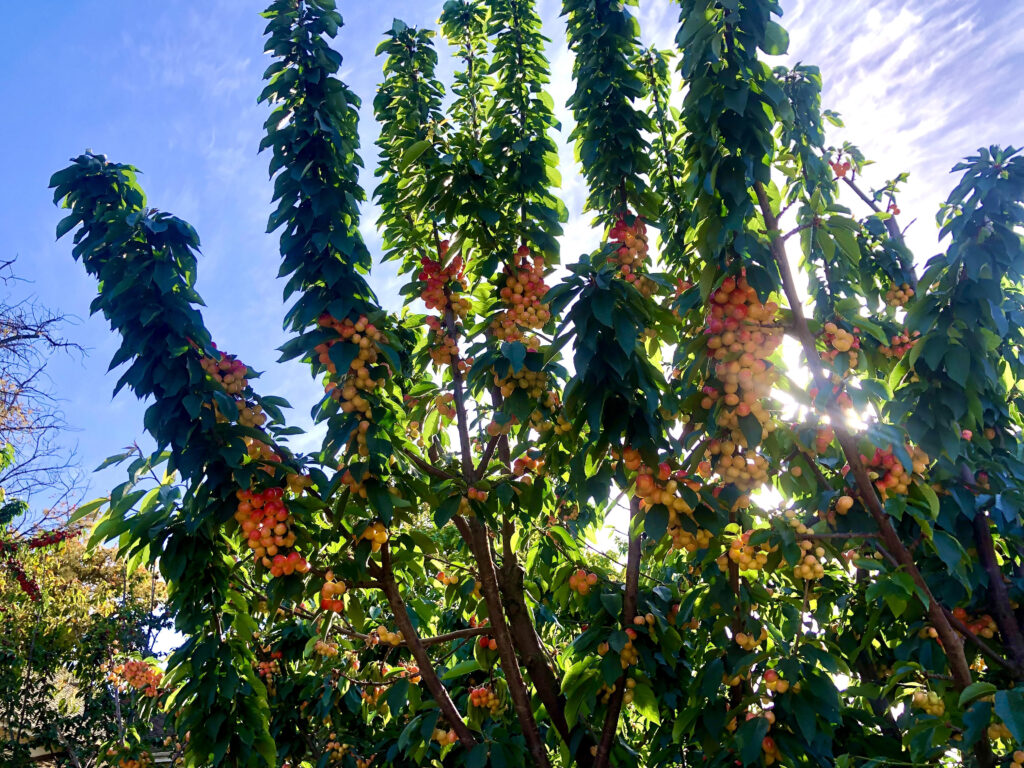
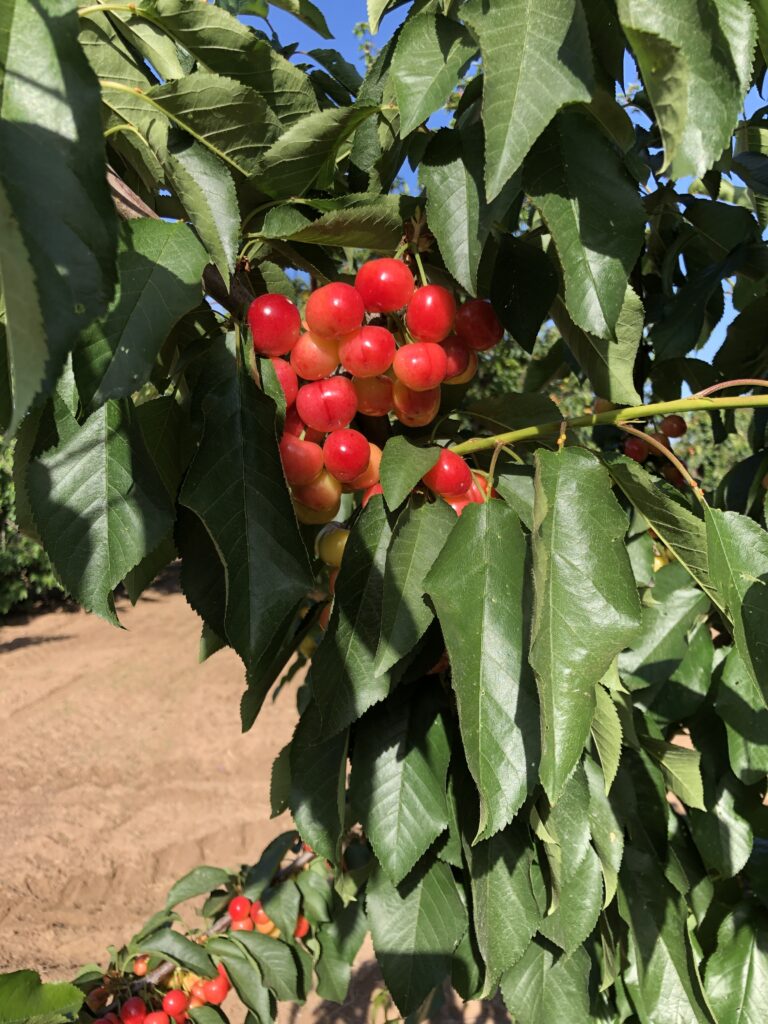
Like a bee drawn to blossoms, I stopped by Novakovich Orchards before Memorial Day, wondering if the cherries were ripe yet. The phone was ringing off the hook in the farm shop with callers asking the same question. Matt and George Novakovich were busy with machinery repairs and helping customers so I took a short tour of the barn yard area, looking for the cats and chickens, smelling the embedded fragrance of dried apricots from last year in the stacked drying frames, cleaned and ready for this year’s harvest. Not long after, they each made time to talk with me about the fruit prospects. The weather was quite warm, with high temperatures forecast for the next few days. Matt said that as long as the heat wave is short-lived, the cherry harvest could roll out at a reasonable pace rather than a mad scramble.
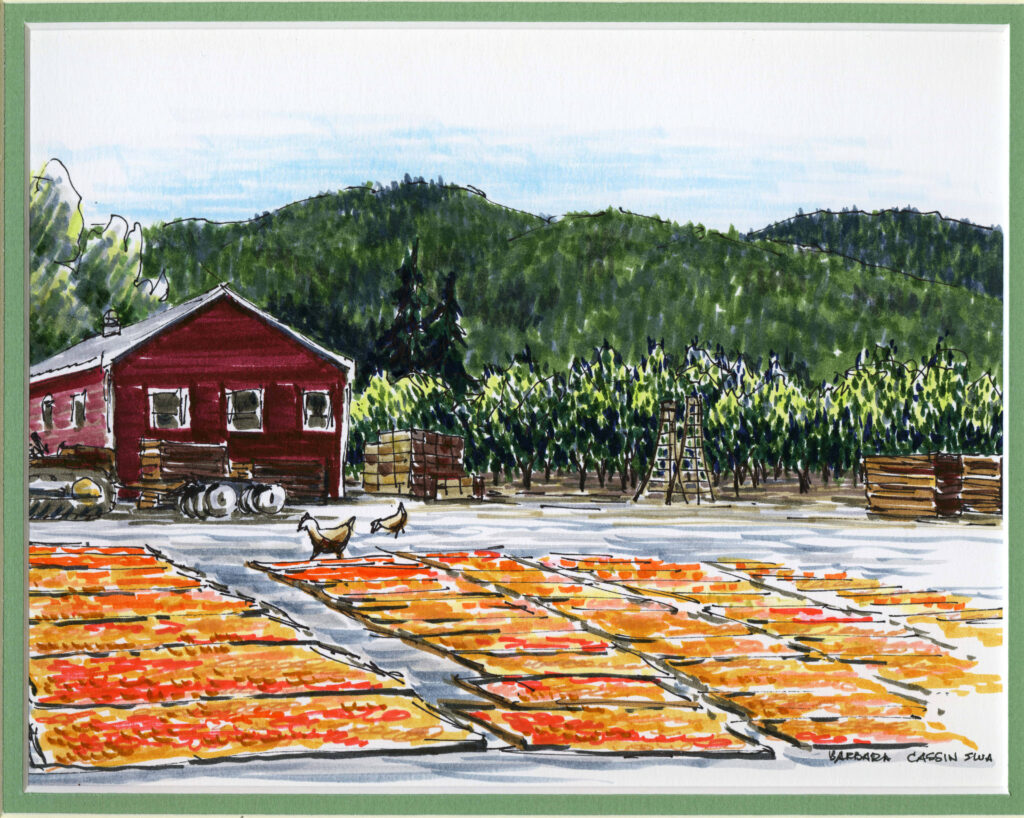
After a while, George closed the farm shop and ushered the cats indoors for the night. With the sun still warm on our backs, we took a tour of the cherry trees. Their perfume drew us along the orchard rows that have a range of tree varieties and sizes. The huge Black Tartarian cherry trees were darkly covered with a profusion of fruit. They tasted luscious and gently sweet. The Bing, Rainier, and Queen Anne cherries were firm to the touch and needed more time to fully ripen. Heading toward the apricot orchard, I was excited to see their green abundance. Still weeks away, the Blenheim apricot harvest is expected to be an outstanding one — for the 5th year in a row! Matt commented that this long run of bumper apricot crops is something that had not happened before in his lifetime.
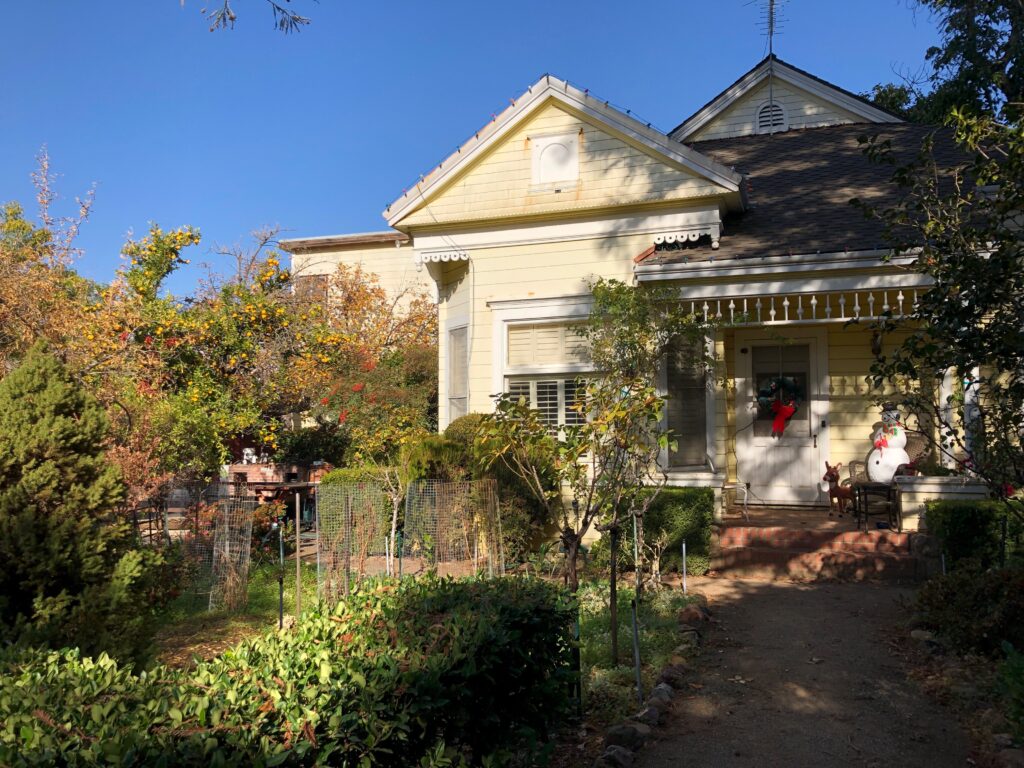
Like so many early orchardists and farmers in the Santa Clara Valley, the Novakovich’s were European immigrants who left their homeland seeking a better life. Matthew Novakovich, Sr. left Serbian Yugoslavia, arriving first in Argentina, where he worked as a butcher and then made his way north in 1911 to work in the Nevada and California gold mines. In 1925, he found his way to Saratoga. With a bag of gold dust, he purchased 11 acres of orchard land on Fruitvale Avenue, an area that was once part of the Mexican Quito Rancho land grant.
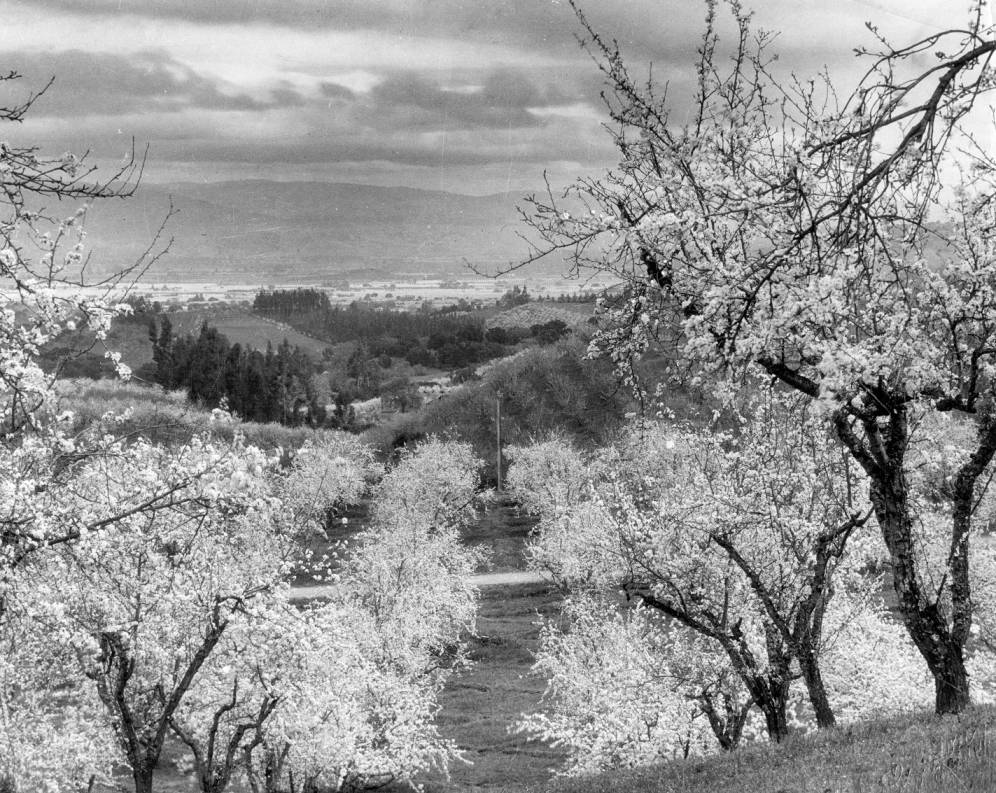
Today, the Novakovich Orchard is a historic resource included in the Saratoga Historic Resources Inventory. The origin of their property dates back to the 1863 purchase by John Hourecan. He cleared the land of native Oaks and planted grape vines, barley, and wheat. Hourecan purchased adjoining lands and eventually farmed eighty acres. When his ranch was subdivided about 1890, Samuel J. and Mary Church purchased an 11-acre parcel, constructed a home, and established a fruit orchard. The Church family built a Queen Anne cottage typical of the Victorian era in Saratoga, which still stands today. In addition to the house, the property includes an original barn, a water tower, and a carriage house. There is a fruit stand alongside the barn as well as a fruit-cutting shed and a large dry yard.

Milton Seagraves, a farmer from Massachusetts of Serbian heritage, arrived in in California in 1849 to try his luck in the gold fields. In 1856, Seagraves made his way to Saratoga (then known as the Redwood Township). As shown in this 1876 record, his orchard land totaled 80 acres. In 1920, the family purchased 30 orchard acres at the corner of Fruitvale and Saratoga Avenues with 25 acres of French prune trees and five acres of Blenheim apricots. The Seagraves constructed facilities to serve their fruit operation including a dipper (an early technology to clean and prepare French prunes for drying), a large building with a dehydrator to dry the prunes, a smaller cutting shed for processing apricots, and a barn for equipment storage. Many surrounding orchardists brought their fresh French prunes to be dried at the Seagraves’ ranch to preserve them for enjoyment throughout the year.
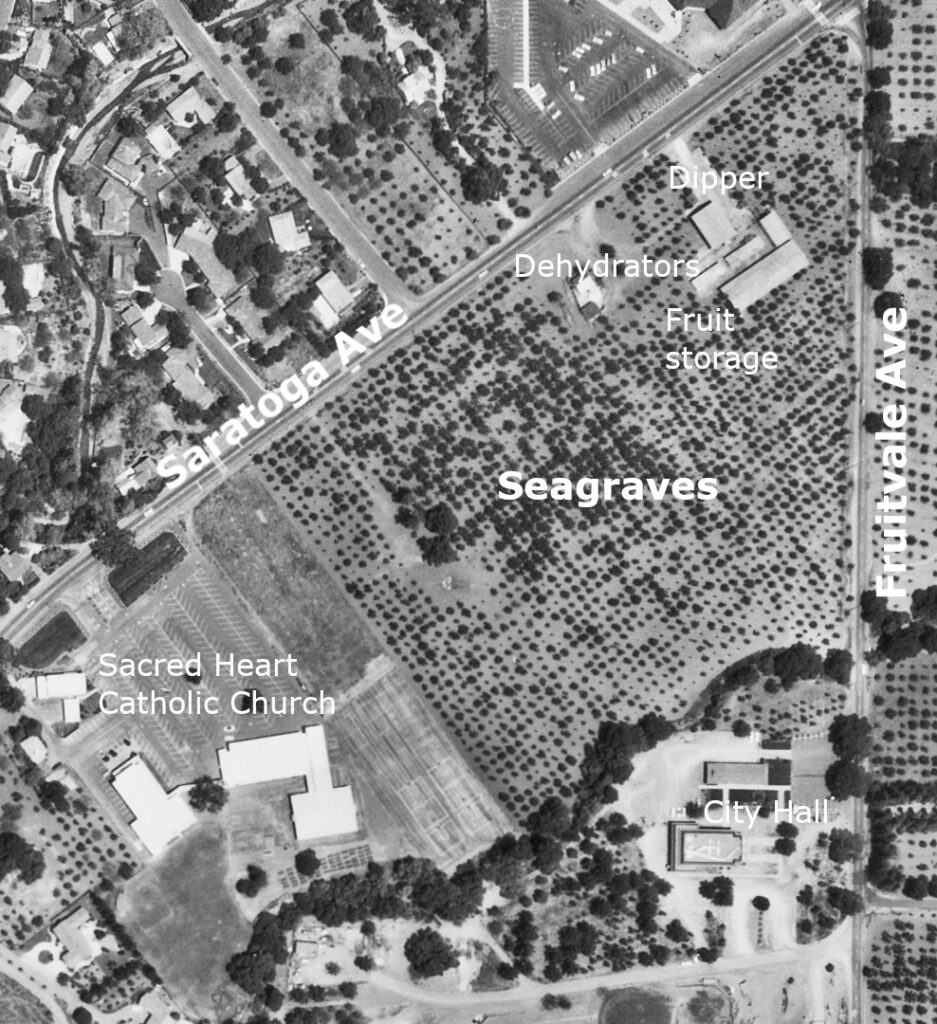
In the 1960s, the Seagraves family sold some of their land along Saratoga Avenue to the Catholic Archdiocese where the Sacred Heart Parish School and Church was established. Over time, they purchased many other ranches, on both sides of Saratoga Avenue, further west on Fruitvale Avenue, and in upland areas of Saratoga. One parcel further west along Saratoga Avenue became a housing site for seasonal farm laborers who travelled north from Mexico each spring to harvest fruit in many of the region’s orchards. The Seagraves sold another orchard located further east on Saratoga Avenue to Paul Masson, famed vintner, who replaced the fruit trees with wine grapes and established the first regional wine tasting room on the property. The Seagraves, Novakovich, and Ljepava families farmed side-by-side on the rich land along Fruitvale Avenue. The families shared Yugoslavian heritage, farming practices, and family ties through marriage. You could say they formed an important backbone of Saratoga’s orchard heritage, and remarkably, one that endures today.
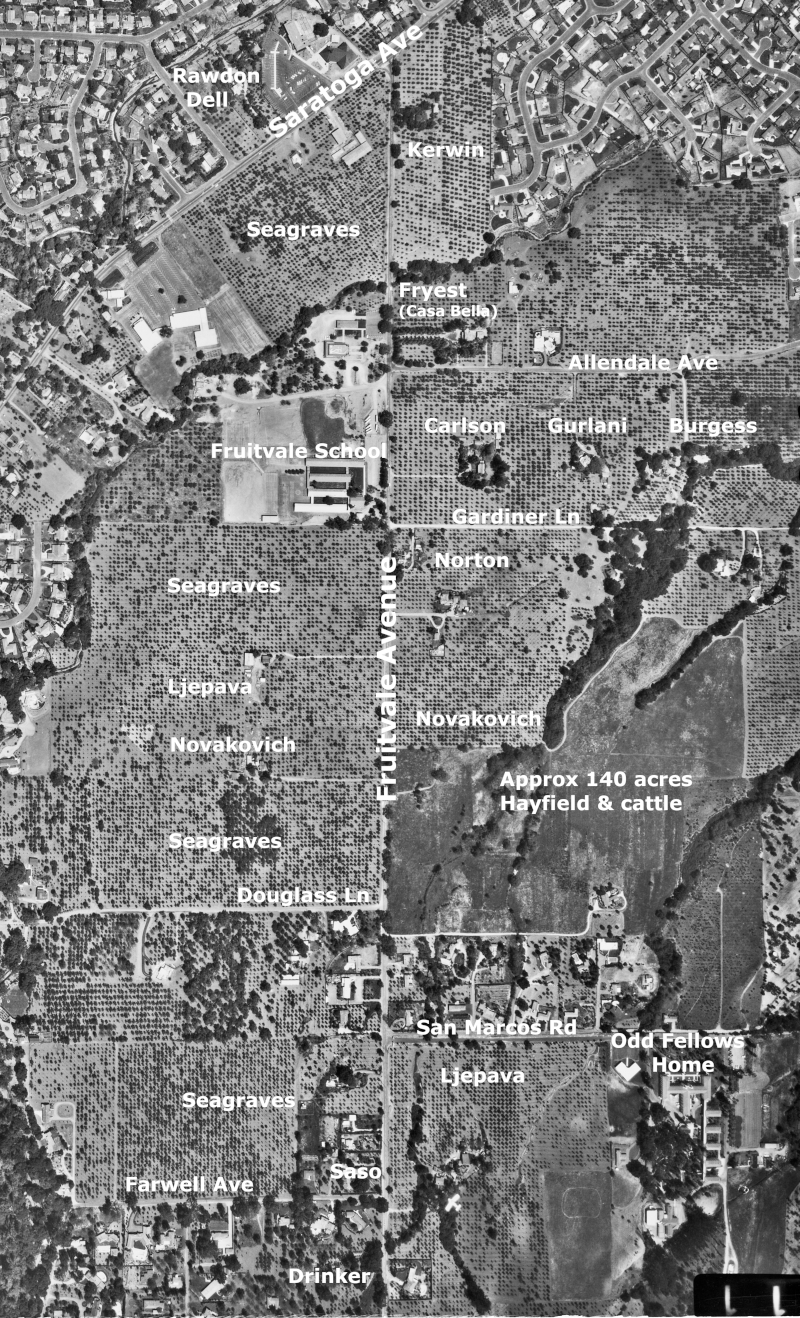
The Novakovich family similarly prospered and expanded their orchard operations across Fruitvale Avenue where they purchased 10 acres and leased 100 acres planted with French Prunes and Blenheim apricots. George Novakovich, Sr. was born and raised on this ranch with his three sisters, and succeeded his father as the second generation continuing the family orchard farming tradition. His sister Julia Novakovich married William Seagraves, forming a new bond between the families. They established a household not far from their families’ orchards, along Saratoga Avenue. In 1950, George married his sweetheart Leah Shelton who migrated to California from Oklahoma with her farming family during the Dust Bowl era.

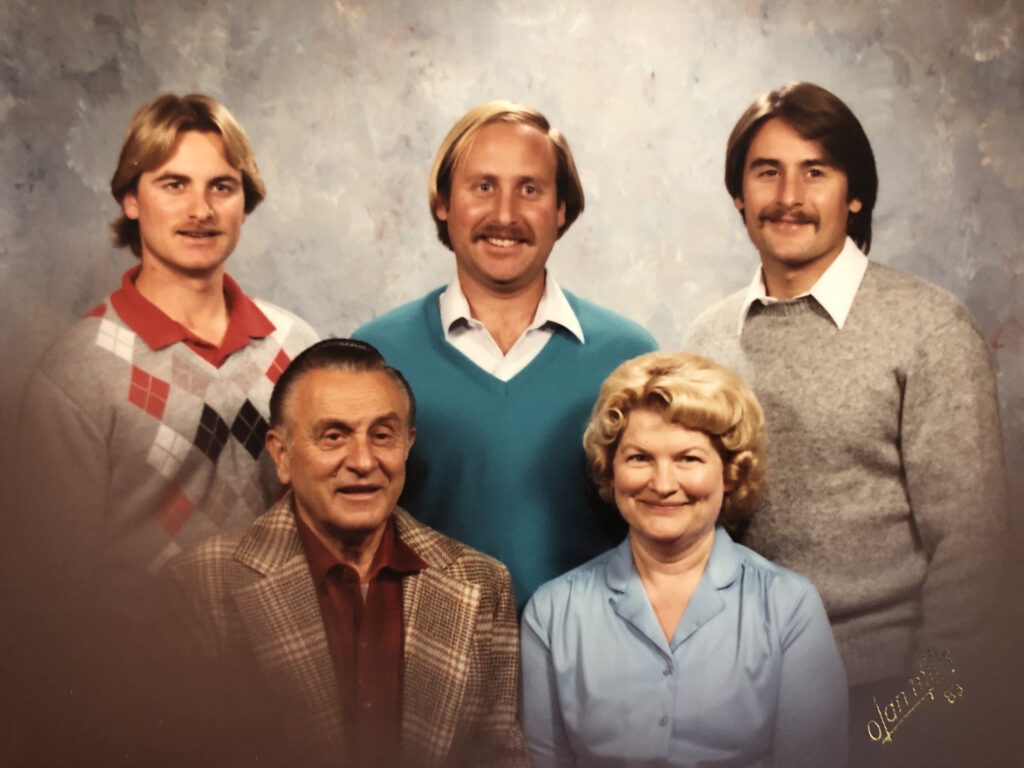
As a new bride, Leah moved into her mother-in-law’s house. George and Leah raised three sons, Matthew, Dan, and George, and three generations of the Novakovich family lived together in their handsome Queen Anne home. After George Sr. took over the family orchard business, he assisted many other orchards in the area with annual tasks such as disking the soil and pruning the trees (including my family’s orchard located about 1/2 mile away). George also fulfilled a 30-year career with the Saratoga Fire Department, organizing his orchard responsibilities around the Fire Department’s schedule, with help from Leah and their sons.
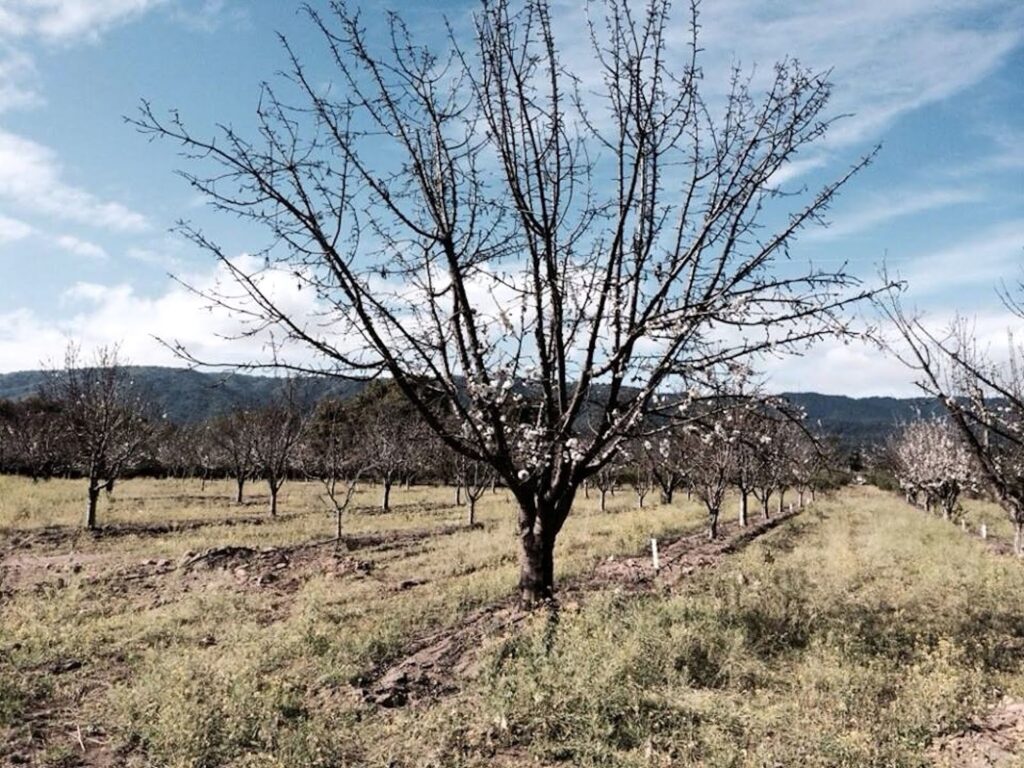
In 1972, the Seagraves family put their ranch up for sale with a plan to continue farming French prunes in the Central Valley. This was a time when orchard land was quickly disappearing as local cities sought to expand and land developers found the orchard land cheap to buy and easy to develop with new housing, schools, and shopping centers. The City of Saratoga made a bold decision to buy the land for a new library and to establish a “Central Park”, allowing the remaining orchard trees to continue to be farmed. Local orchardist Nick Miljevich, followed by George Whiteman, managed the fruit trees from 1972 to 1978. During these years, Saratoga citizens, recognizing the swift decline in the City’s agricultural economy, urged the City Council to preserve the land and establish a “Heritage Orchard”. In 1978, the next-door farming expert, George Novakovich, Sr. signed on to manage the City’s orchard and improve its condition.
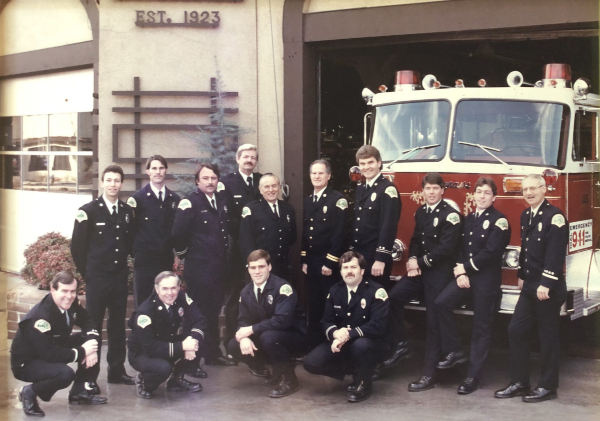
George Sr. retired as Captain of the Saratoga Fire Department in 1987 and sadly died two years later at age 65 from cancer. From that day forward, Matt and his younger brothers carried on the family’s farming tradition. Matt, a seasoned farmer in his 30s, immediately took over management of the Saratoga Heritage Orchard and shared responsibilities for the family farm with younger brother George. The two brothers continued to live on the ranch with their mother Leah. Dan kept a hand in the family’s orchard business while he raised a family with his wife Wendy, and followed in his father’s footsteps as a career firefighter for the City of Santa Clara.

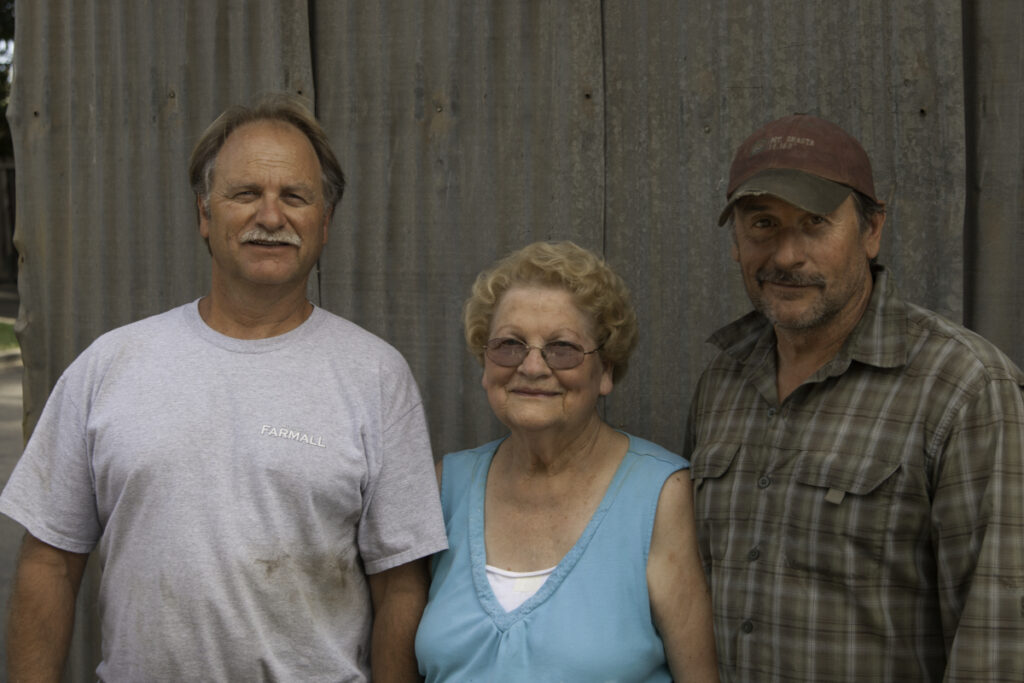
Matt managed the Saratoga Heritage Orchard with new insights and energy to expand its infrastructure and fruit stock, and minimizing the maintenance cost to the City by harvesting and processing the fruit. Like his father, he performed this work in addition to the responsibilities of managing the family’s orchard. Matt’s goal for the City’s orchard was the same as for the family orchard: to produce the highest quality Blenheim apricots, French prunes, and cherries; keeping alive the tradition of cultivating the world class fruit from the Valley of Heart’s Delight.
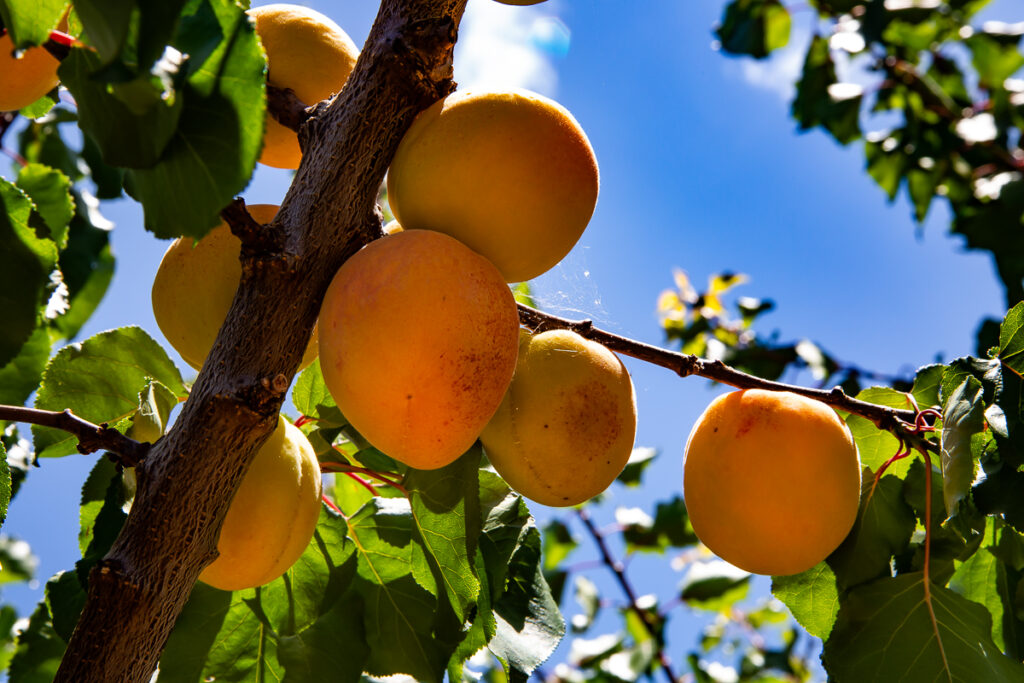
Being the farmer located “next door” to the Heritage Orchard was a significant benefit to the City not only for the generational knowledge he brought to the task. Matt performed the City’s orchard maintenance tasks using his own equipment, located so close by, and cared for the trees as his father and grandfather had done: pruning the trees and thinning the fruit to enhance their size and flavor; propping fruit branches that grew heavy with ripening fruit to avoid damage before the harvest; and treating pests to minimize risk to the trees. With seasonal help, he managed the harvest of each fruit variety and prepared them for sale to the community according to orchard tradition: selling cherries, apricots, and prunes at peak ripeness and flavor at the Novakovich Orchards farm shop and preserving a substantial portion of the apricot and prune crop for use throughout the year.
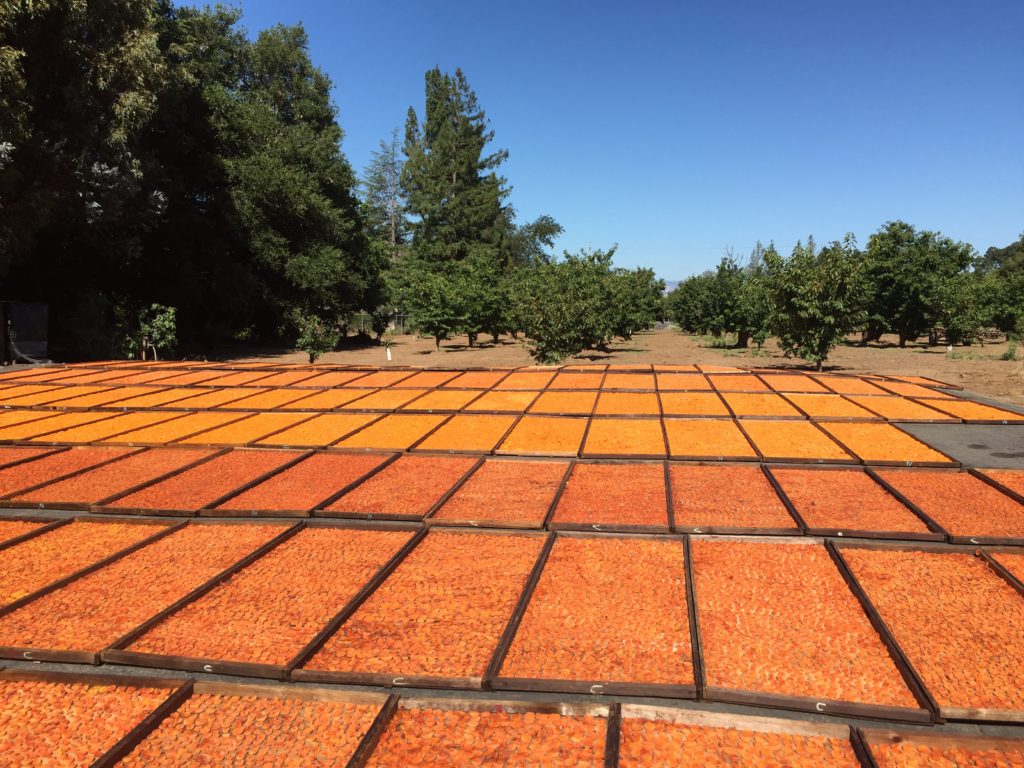
As the City’s Heritage Orchard manager, a large proportion of the fresh Blenheim apricots and also at Novakovich Orchards (about 75%) are dried at the Novakovich Orchards dry yard to preserve them for the community to enjoy in all seasons. This sustainable practice developed because the flavorful yet fragile Blenheim apricot must ripen on the tree and be hand-picked at peak flavor. Because they have a very short shelf life, Blenheim are not suitable for storage or shipping long distances. Some of the harvest can be enjoyed fresh but drying the fast-ripening apricots for a few days in the free summer sunshine ensures that they do not go to waste. Demand for dried prunes has always been stronger than consuming them fresh and so most of the City orchard’s French prune crop was sent to the Seagraves’ prune ranch in Yuba City to be dried in their large dehydrator facility, then returned for sale at the Novakovich Orchards farm shop.
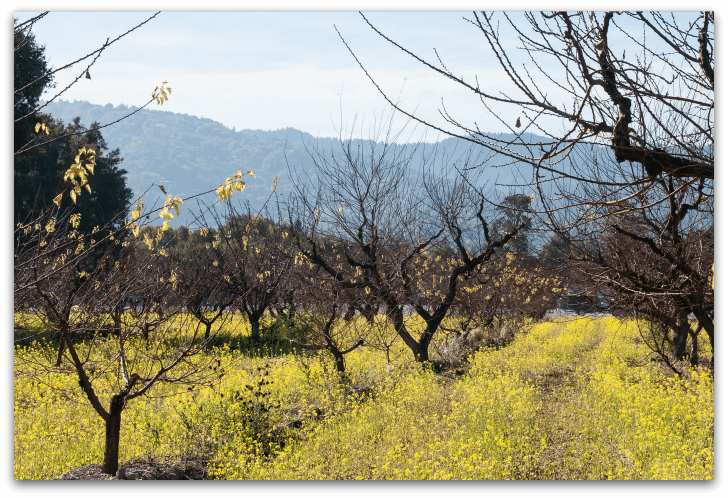
Early in his tenure maintaining the City’s Heritage Orchard, Matt helped organize and manage the Saratoga Mustard Faire. This community-wide orchard heritage celebration, followed in the tradition of the famed Saratoga Blossom Festival. The annual Saratoga Blossom Festival, which began in 1900, celebrated the mile upon mile of spring blooms that carpeted the Santa Clara Valley, and was a beloved community tradition that ran for more than four decades until it ended abruptly at the beginning of WWII. The Mustard Faire, sponsored by the City of Saratoga and the Saratoga Historical Foundation, was initiated in February, 2001 at the City’s Heritage Orchard to honor the Blossom Festival tradition. By this time, Novakovich Orchards and the City’s Heritage Orchard were the last remaining examples of Saratoga’s agricultural past. In the early 2000s, the City renewed its commitment to maintain the Heritage Orchard as a working orchard by developing a new well for irrigation and a plan to plant 400 new fruit trees, that Matt Novakovich implemented.
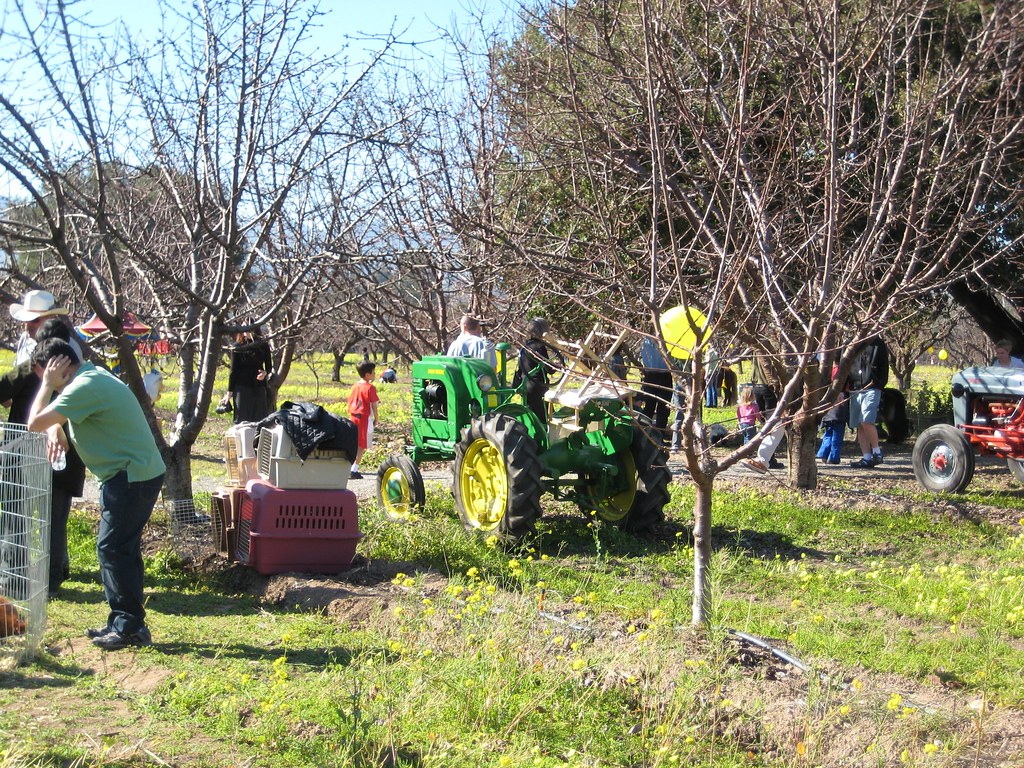
Nostalgia for Saratoga’s famed Blossom Festival grew over the next decade until the Saratoga Historical Foundation recreated a community celebration in its honor in 2013. It has been held frequently since then in the Heritage Orchard during early spring time. Sharing this sense of renewal, the City of Saratoga developed a more formal Heritage Orchard vision in a 2020 Master Plan. Among the Master Plan’s objectives are to preserve the 14 acres as a working, productive orchard in perpetuity, using best agricultural practices, and to provide educational opportunities and events for the community to learn about the Valley’s agricultural history. In support of this plan, Matt provided seasonal orchard tours to the community, sharing information about the Valley’s agricultural history and orchard traditions through his family’s deep association and his personal knowledge.
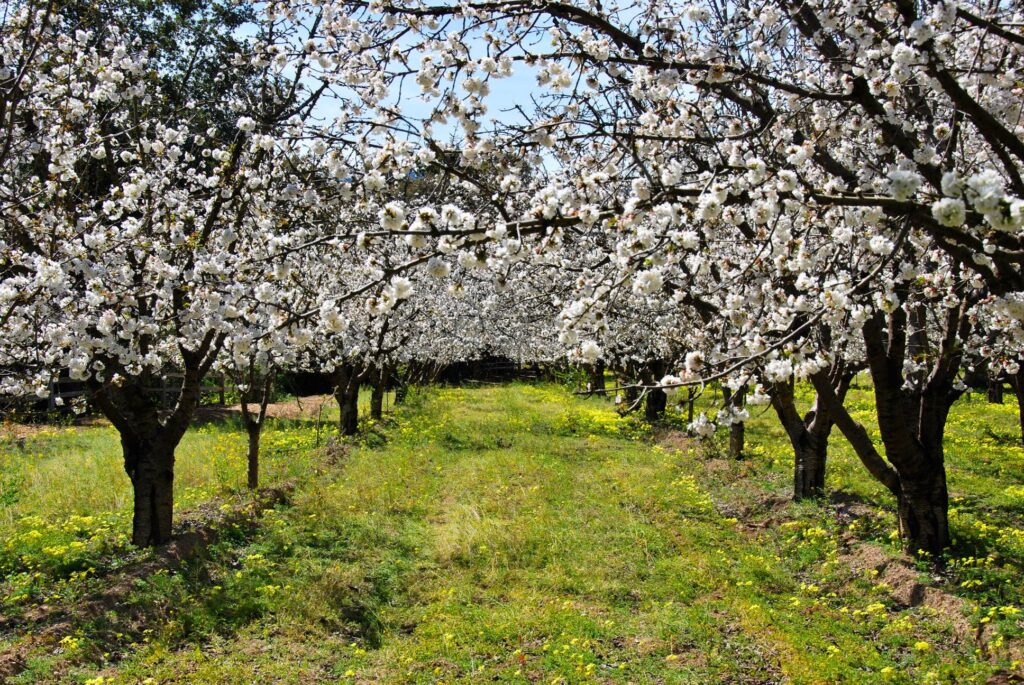
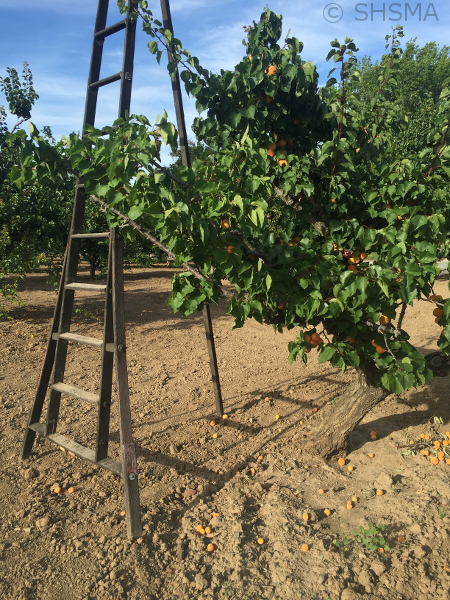
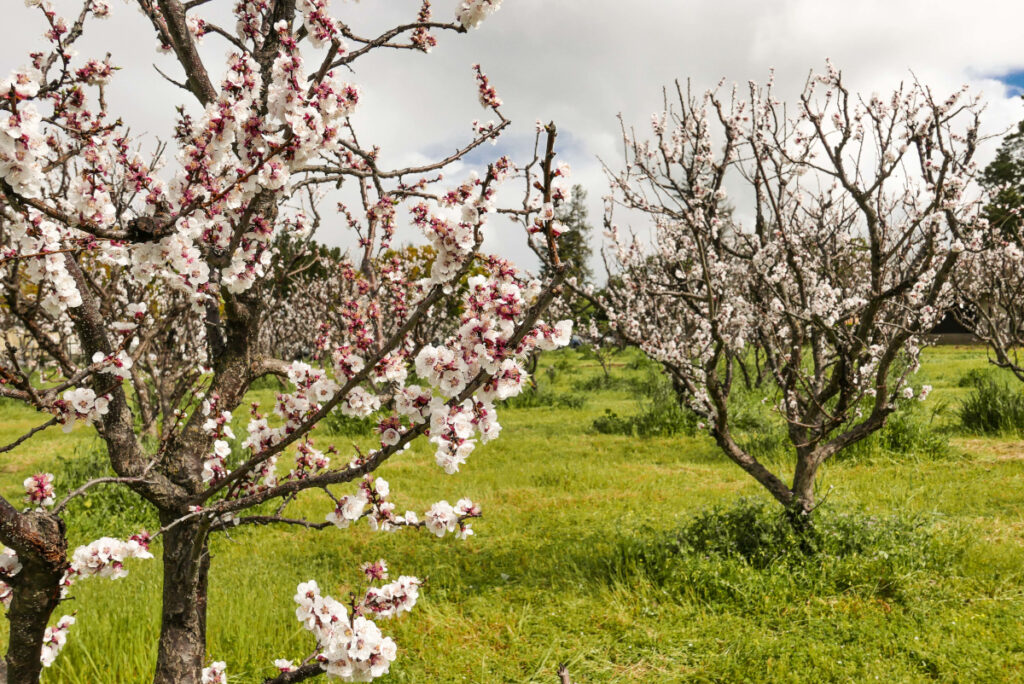
Similar to Saratoga, other nearby cities also preserved Heritage Orchards, including Sunnyvale, Los Altos, and San Jose. Together, these Heritage Orchards are a “string of pearls” that showcase the region’s agricultural history. Each city contracts with local orchardists to maintain these public orchards, continuing the farming tradition of cultivating and selling premium quality fruit to the community at local farm stands. This arrangement offsets maintenance costs to the cities while ensuring expert management of the trees and fruit, and fulfilling the intent of maintaining “Heritage Orchards” as a public benefit. These small pieces of the region’s once enormous orchard heritage continue to provide the fruit that residents love while protecting the orchards’ gifts of beauty and serenity. By selling the fruit (rather than giving it away), farmers are incentivized to work through all the adversity and uncertainties of farming, including pests, climate challenges, labor shortages, and increasing costs to deliver a hand-cultivated product that satisfies consumers both near and far who treasure the Santa Clara Valley’s extraordinary fruit.
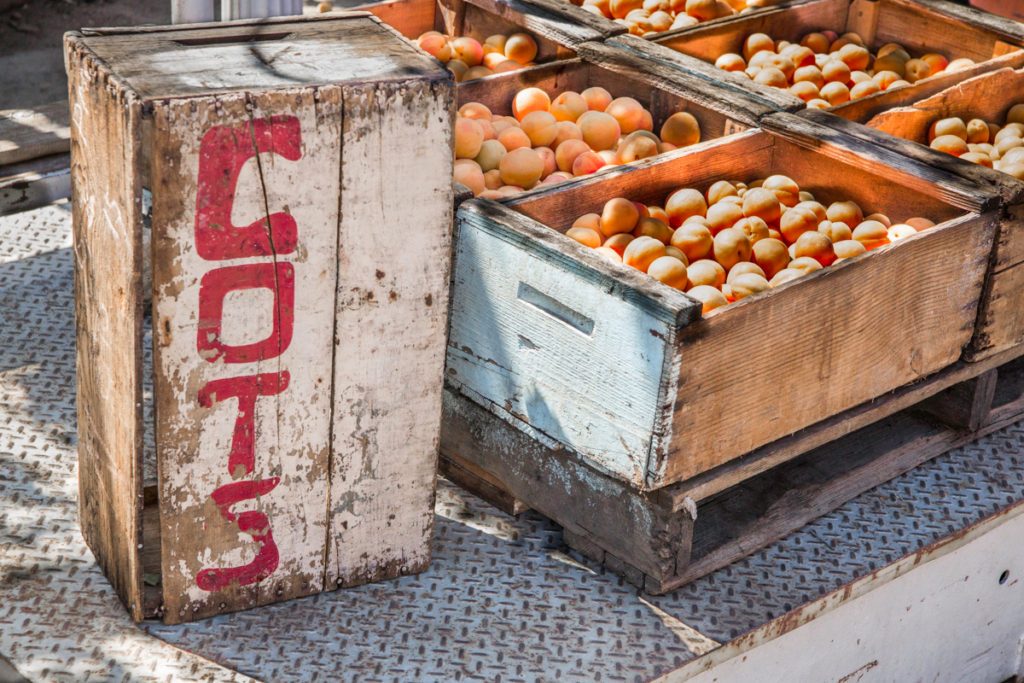
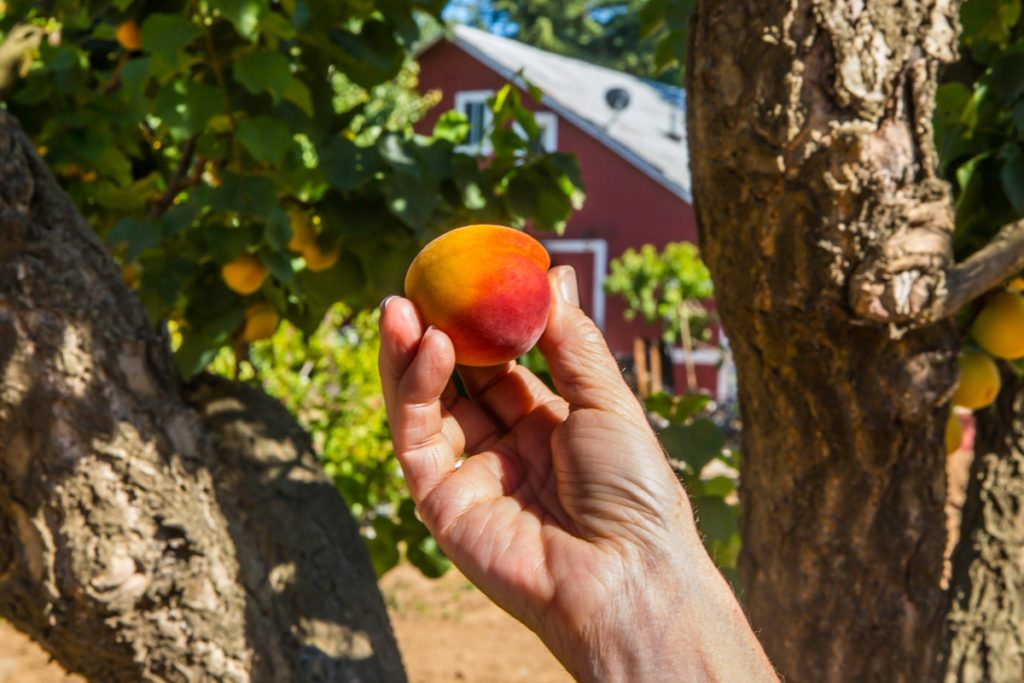
These professional orchard managers value their deep connections to one another in the region, among them, Phil Doetsch (Los Altos Heritage Orchard), Charlie Olson (Sunnyvale Heritage Orchard), Matt Novakovich, Saratoga Heritage Orchard, Andy Mariani (Morgan Hill’s Andy’s Orchard), Mike McKinney (Los Altos Packard Trust Orchard). The orchardists maintain close-knit relationships, share knowledge, provide one another with fruit as supplies vary, tree stock for replanting, and lend a hand when necessary. Each of these orchardists comes from a rich farming lineage and are living encyclopedias of the farming legacy of the Valley of Heart’s Delight. After 97 years of family farming, Novakovich Orchards is the oldest commercial orchard remaining in the Santa Clara Valley — a very special heritage and source of pride for the Saratoga community!
The Saratoga Heritage Orchard Master Plan recognizes the value of this significant brain trust in the Objectives to “develop an outreach program to surrounding communities with heritage orchards in order to share ideas, foster and encourage a network program with other heritage orchards, and orchard preservation programs.”
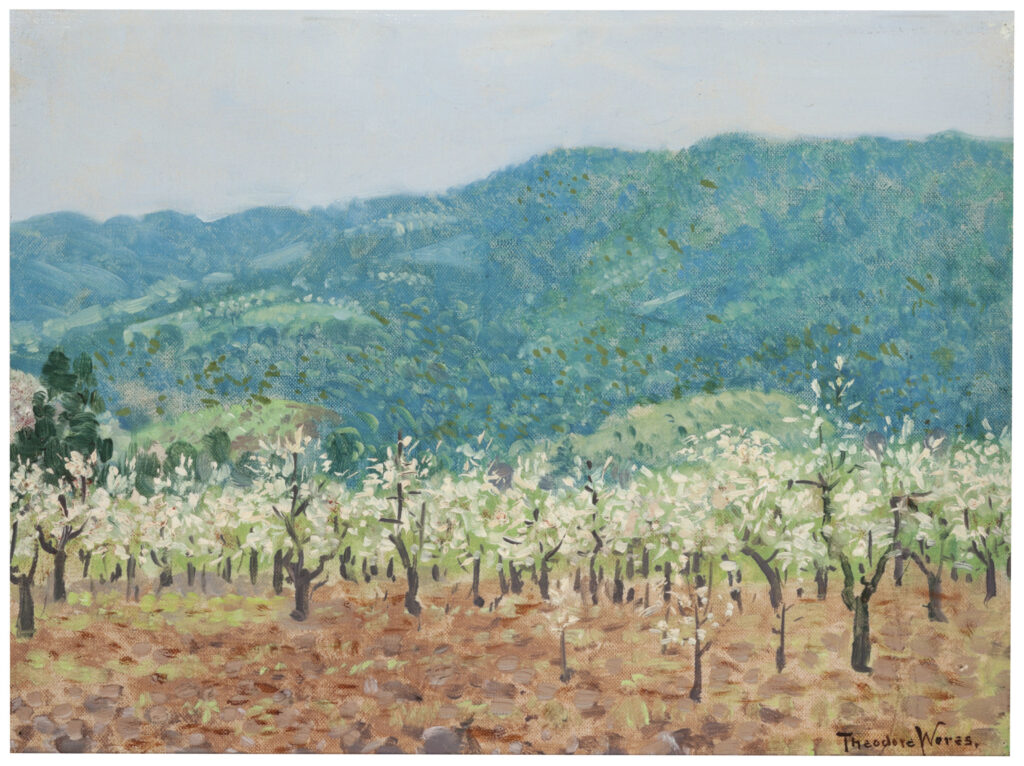
“It was the worst of times…” As Joni Mitchell once sang, “Don’t it always seem to go, you don’t know what you’ve got ’til it’s gone; they paved paradise and put up a parking lot!” In the fall of 2019, City of Saratoga staff put the Heritage Orchard maintenance contract out to bid. No clear reason was given for this change. Surprised yet determined, Matt Novakovich applied to continue as the Heritage Orchard manager. At a public hearing in February 2020, the City awarded the contract to a landscape maintenance company based in Santa Cruz County, abruptly ending 41 years of professional service by Novakovich Orchards. City staff’s only explanation for this dramatic change was that Novakovich Orchards had not obtained their “Qualified Applicators License (QAL)” by the contract application deadline. Inexplicably, the City did not consider that Matt Novakovich and the owner of the landscape company who received the contract, were enrolled in the same class and received their licenses at the same time.
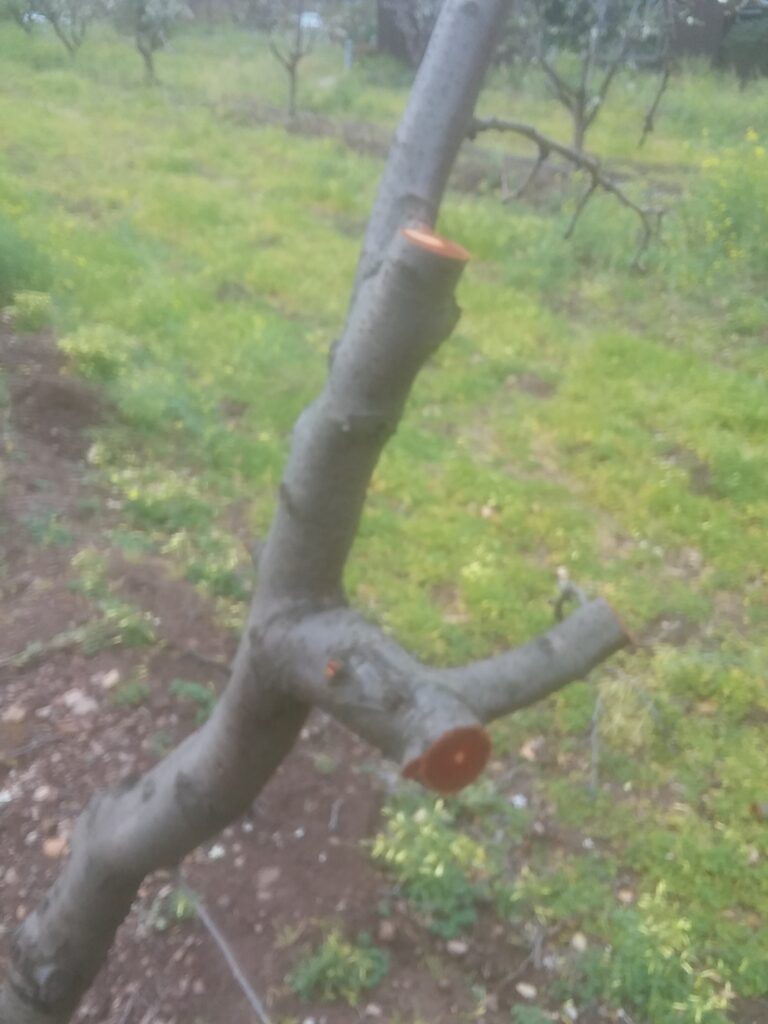
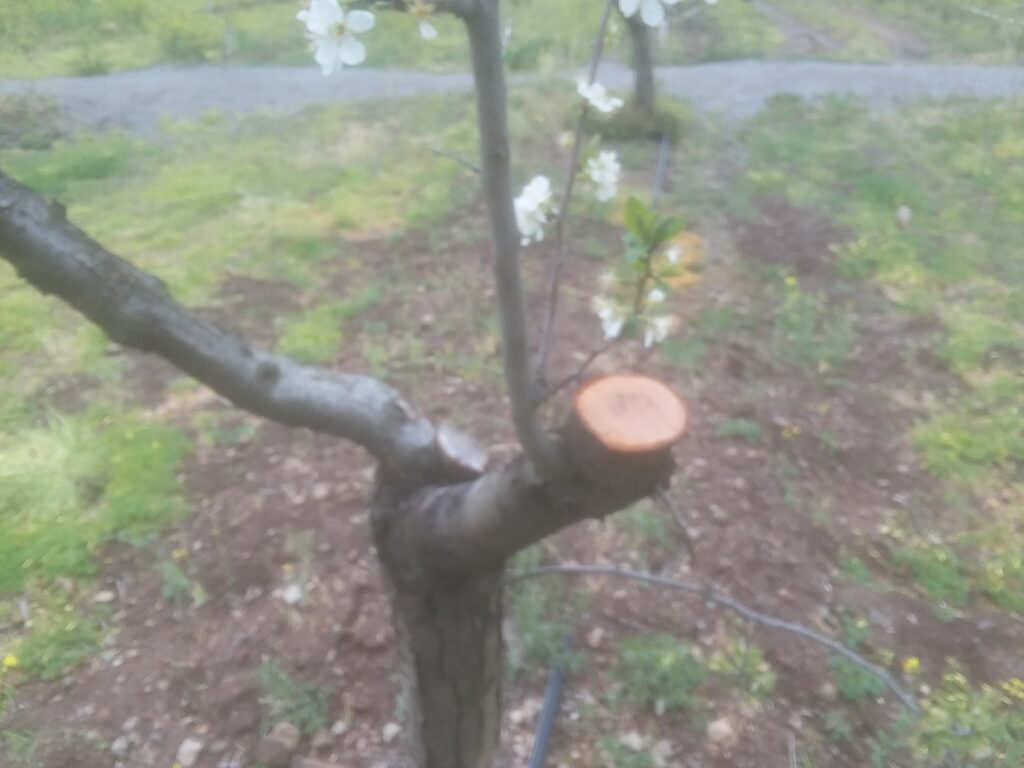
Within weeks of awarding the contract to the landscape company, Covid-19 arrived and with it, shelter-in-place. Sadly, City staff and elected officials, who are not farmers to begin with and rely upon professional management of the Heritage Orchard, did not recognize the importance of consistent farming practices to a long-established orchard. The new landscaping contractor knew nothing about the maintenance history of the orchard, did not possess the proper orchard management equipment nor the relationships with other professional orchardists in the region to guide them, and had limited experience cultivating orchard fruit. Despite Covid and its challenges, this company was ill-suited to handle the complex problems that orchardists face year after year.
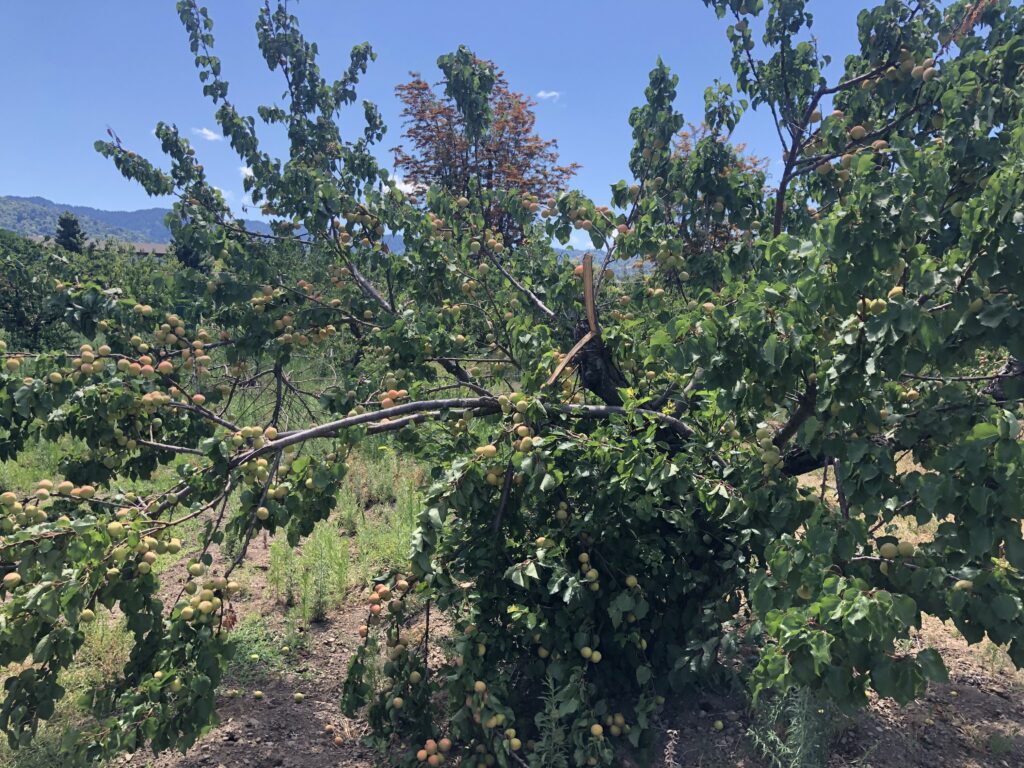
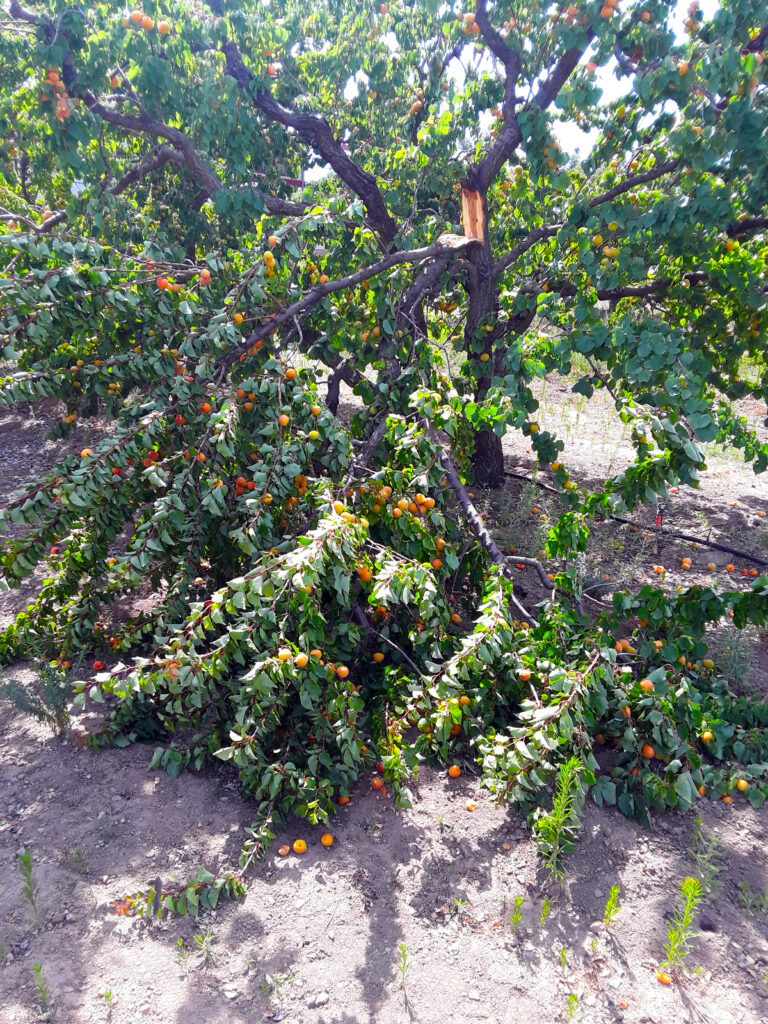
What has happened to the Heritage Orchard under the new management company was unimaginable to local orchardists, including the Novakovich family. Ignoring time-honored heritage orchard care practices (including regular pruning, applying winter dormant spray to the trees, cultivating a winter mustard cover crop, consistently managing ground pests and bugs, propping limbs and thinning the fruit as it gains size, and irrigating the orchard only a few times during the summer heat), even residents and local orchard enthusiasts noticed the lack of professional management. At the height of the summer 2020, a professional orchardist in the region sadly noted, “the orchard looked abandoned.”
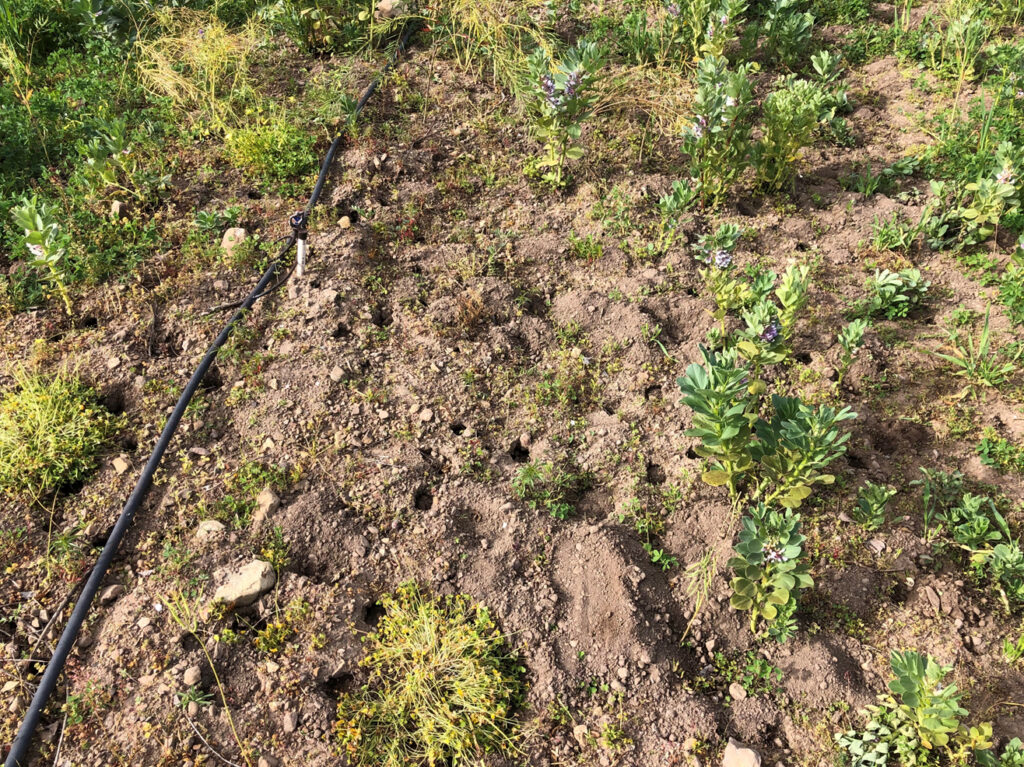
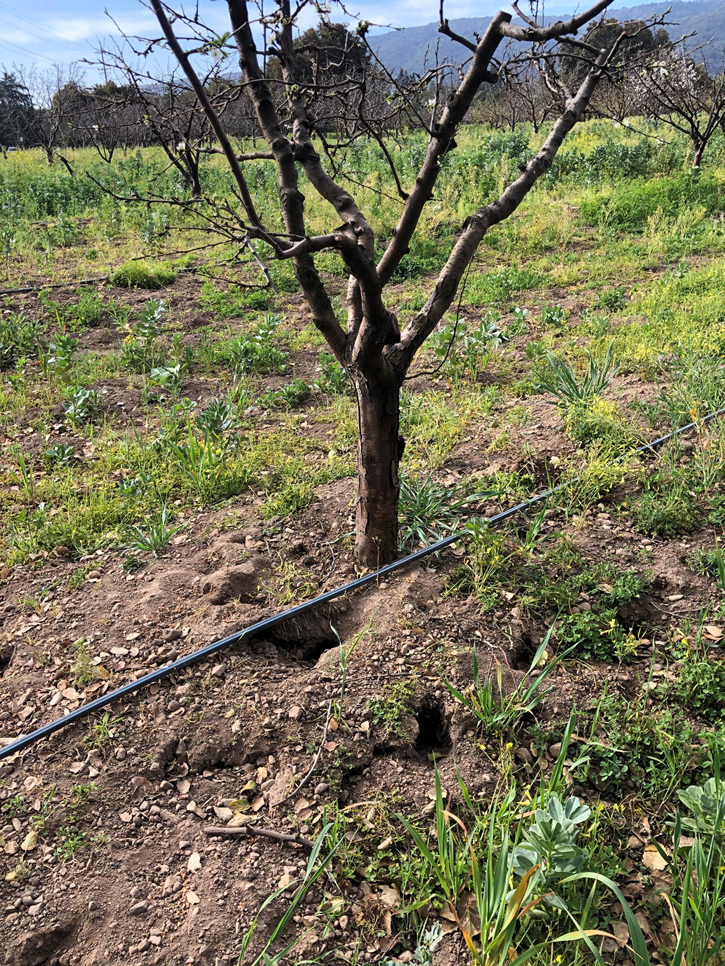

Pest management went by the wayside leaving gophers and squirrels to multiply and undermine young trees. Adding insult to injury, the new contractor cut down scores of trees that were older but still productive and left their stumps standing tall as witness. Matt Novakovich, watching from the sidelines, felt a deep personal loss over the damage to the trees he had cared for his entire adult life. He took careful notes and photos and could only conclude after seeing the fruit waste at harvest time, “If you don’t care about the fruit, you don’t care about the trees.”
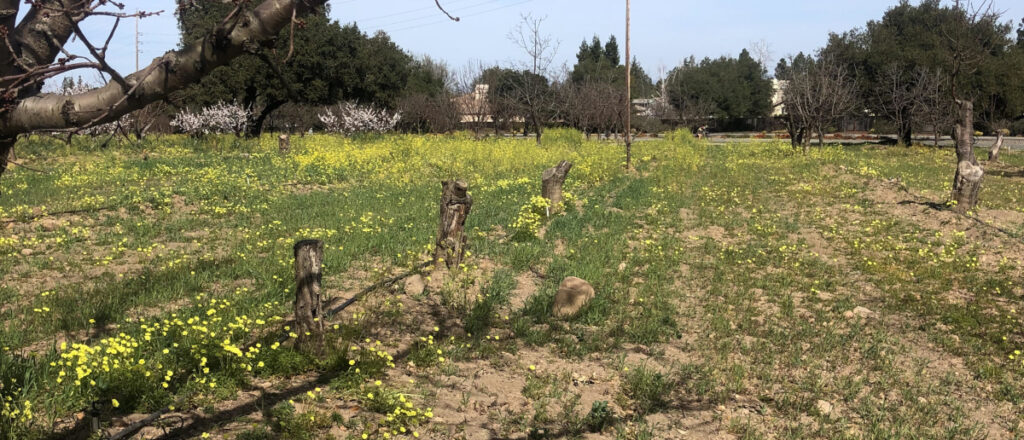
The City did not follow their own Heritage Orchard Master Plan. They failed to consult with the community about this abrupt shift in fruit management practice and did not consider how the other Heritage Orchards manage their fruit production. The Cities of Los Altos and Sunnyvale maintain longstanding contracts with local professional orchardists who have deep roots in the region. Phil Doetsch grew up on a Los Gatos orchard ranch and is the Los Altos Heritage Orchardist. Charlie Olson is the third-generation manager of his family’s famous cherry and apricot orchards who has managed the City of Sunnyvale’s Heritage Orchard since the 1970s. Each community’s orchard maintenance contract involves selling the fruit to the community at the orchard site or local farm shop. The proceeds from the fruit are accounted for in the contract. This is a benefit to the community who continue to enjoy the best examples of our region’s fruit orchard heritage in a manner that helps reduce the annual maintenance cost to the public agency, and supports the region’s remaining orchardists. In the case of Saratoga, the professional orchardist lives next door and the community enjoyed the Heritage Orchard fruit year-round at the Novakovich Orchards farm shop for decades, until 2020.
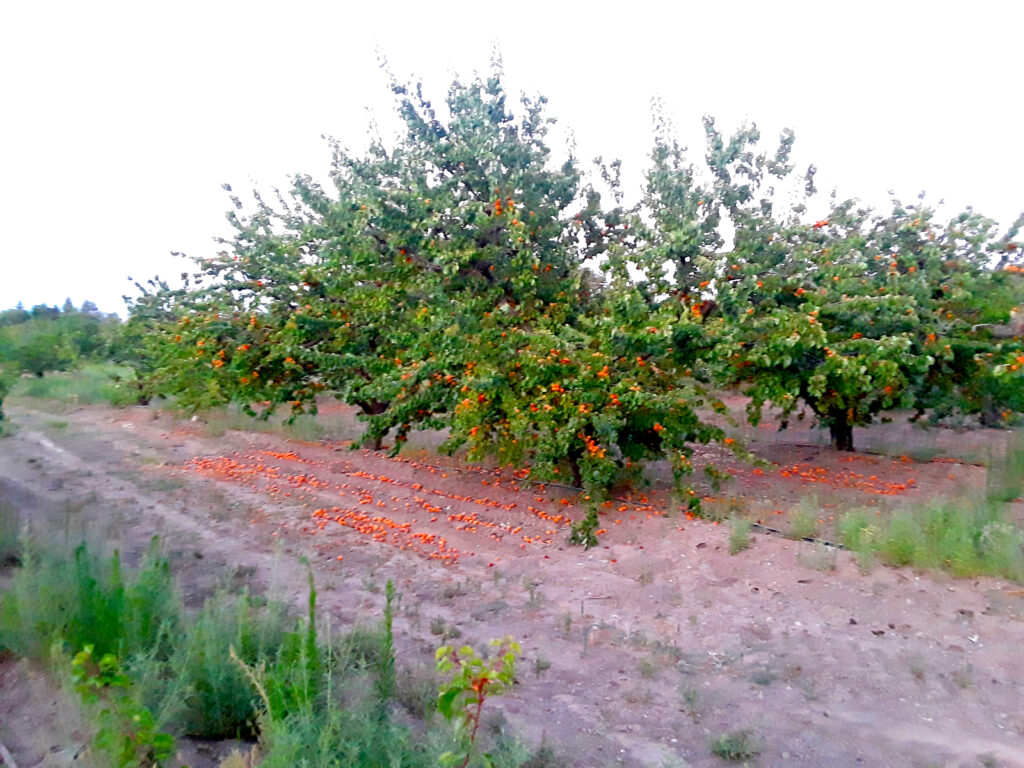
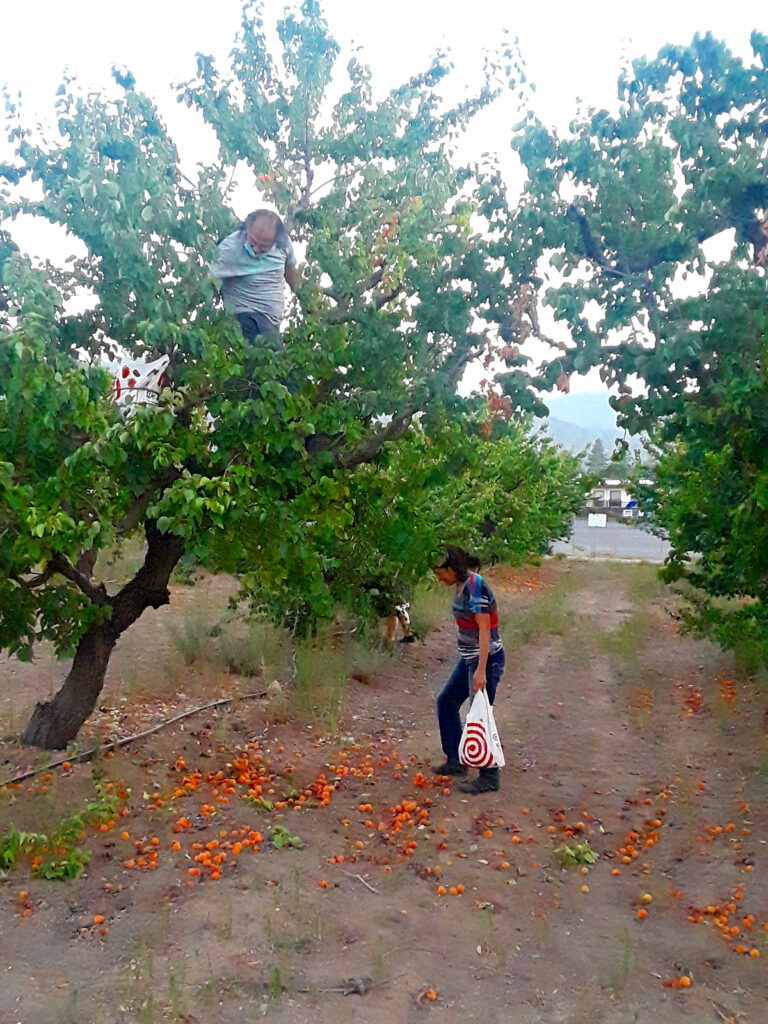
The Sunnyvale Orchard Heritage Park Master Plan has a helpful guiding statement: “Provide public access to the greatest extent possible while meeting the goal of maintaining a working fruit orchard.” The City of Saratoga has not yet had a conversation with the community about how to best balance these objectives. In 2021, the City opened up the door to invite the public to pick the Heritage Orchard, a practice that not only invites damage and risk to the orchard but also directly competes with and undermines Saratoga’s last family-owned professional orchard, Novakovich Orchards. Rather than work to strengthen the two remaining pieces of its orchard heritage, the City has chosen to pull them apart. This ignores the fact that the generations of lived experience that orchardists still working the land possess is an integral part of our agricultural heritage, one that deserves our support as much as the land and trees preserved by our local governments.
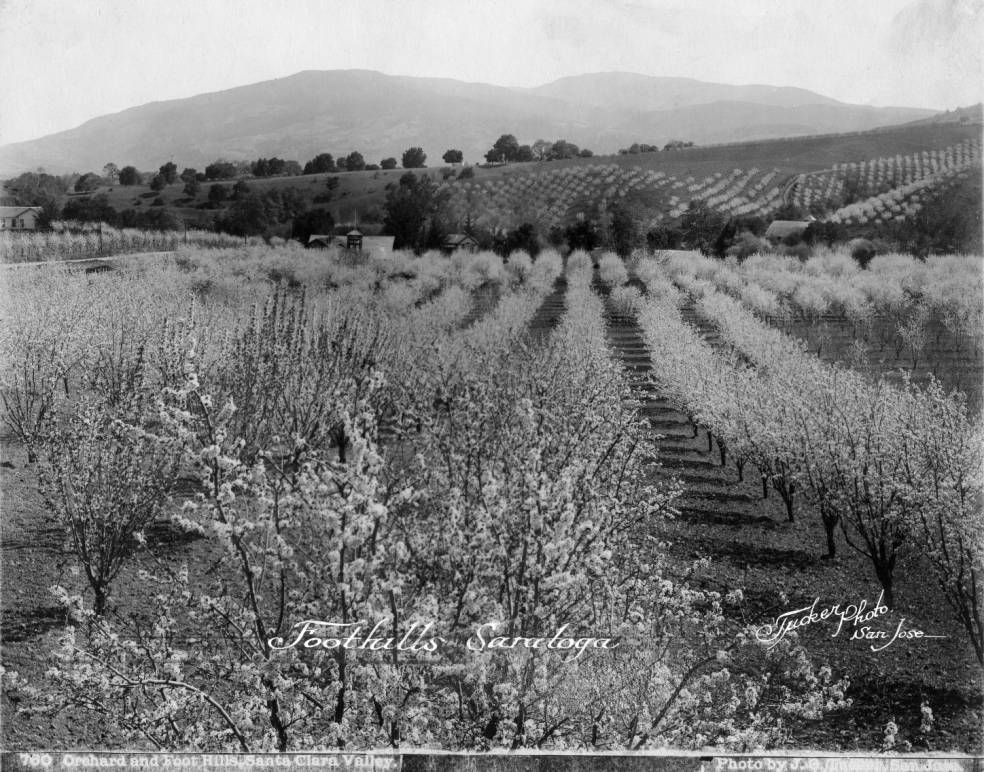
In my view, the City of Saratoga has lost sight of the deep connection the community and region have to the Heritage Orchard, its health and fruit cultivation. This was evident with the outpouring of letters and testimony about the Heritage Orchard maintenance contract at the City Council hearing in April 2021. Still, the City Council majority voted to continue the contract with the landscape maintenance company for another year. While the City staff and Council’s experiment with “u-pick” community events and donating the balance of the harvest to food banks has delighted many — who wouldn’t enjoy getting a precious resource at no cost? — this “free-for-all” approach comes at a significant cost to the City. Public funds are being used to subsidize the loss of the fruit’s value that is being given away. This approach also ignores the City’s commitment to its agricultural heritage, of working with family farmers to carefully tend the trees, produce the best possible fruit, and sustainably process the fruit so the community can enjoy it in every season, not just for a few weeks at harvest time. The City has also treated the City’s last farm family, Novakovich Orchards, unfairly with this program to give away the Heritage Orchard’s fruit.
I encourage everyone to visit Novakovich Orchards, the last remaining commercial orchard in Saratoga. Take some time to smell and taste the fruit grown there at the farm shop. Enjoy the historic family farm buildings, expanse of orchard trees, and the feeling of traveling back in time to Saratoga’s agricultural past. If you visit during harvest time, observe the family and workers picking and preserving the fruit, and appreciate the rich agricultural tradition that, at least for now, is alive in the City of Saratoga. Please also lend your support to the Friends of the Saratoga Heritage Orchard Facebook page. Together, we can build a better, sustainable future that honors the fruit orchard traditions of our past.
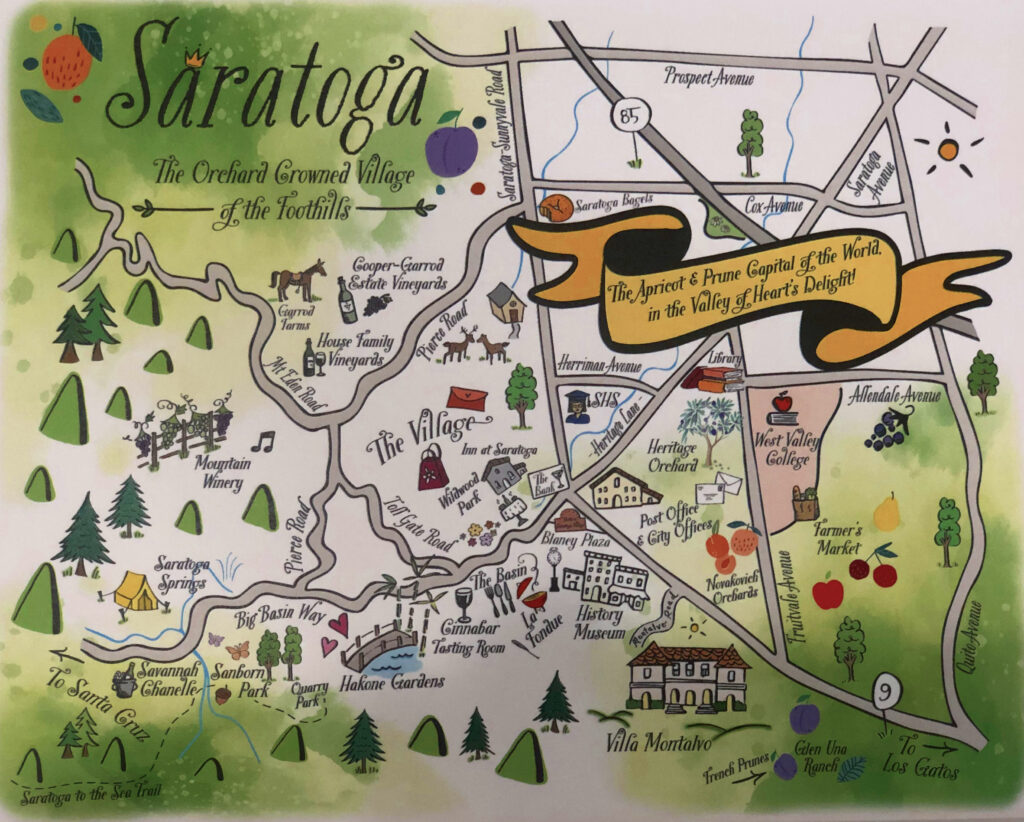

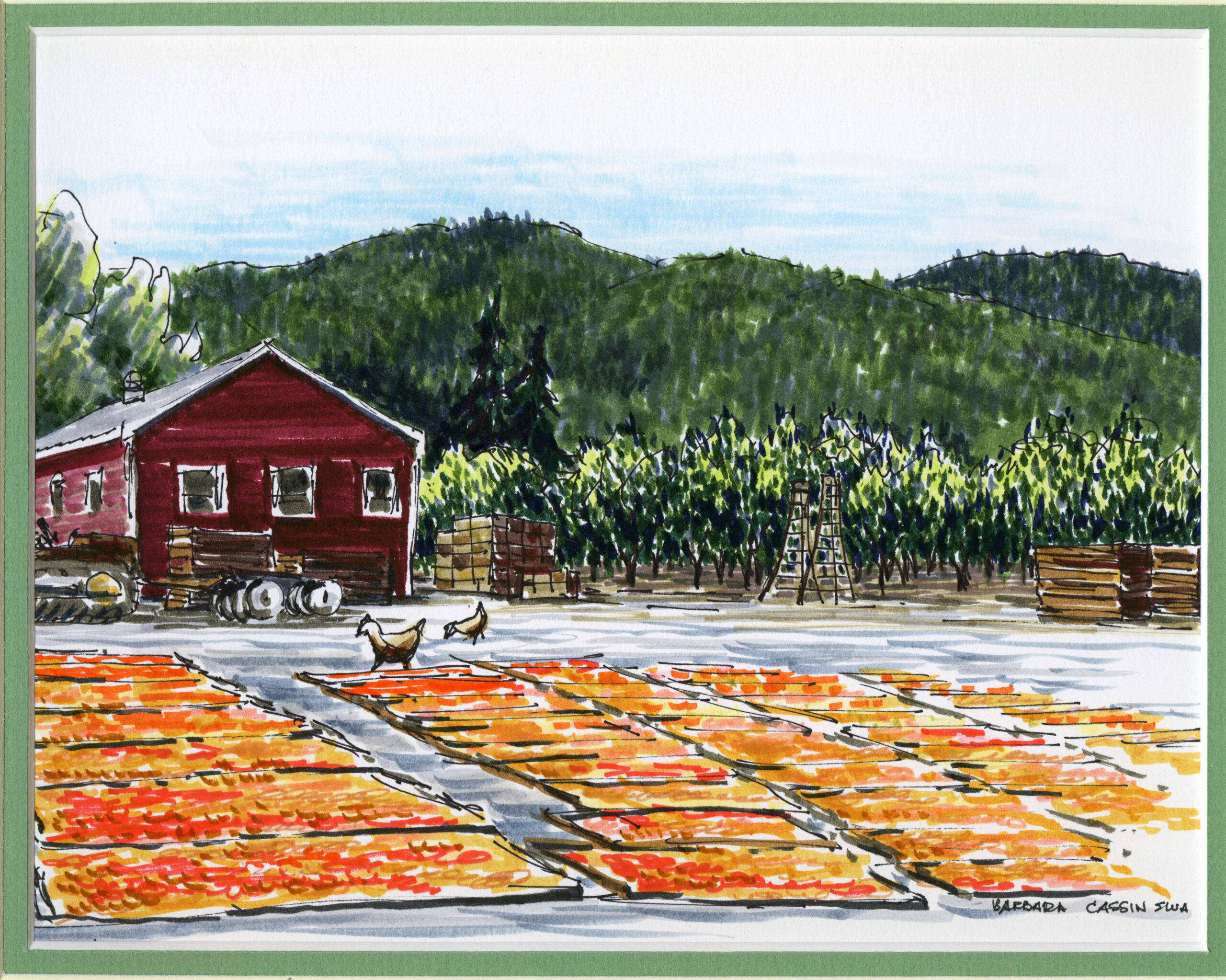
Do you know if the apricots at the Packard estate in Los Altos Hills are Blenheim?
Yes, they only grow Blenheims.
Yes, they are Blenheims!
The city of Saratoga should be sued for allowing the destruction of the Heritage Orchard. I no longer get to live in the Valley of Heart’s delight or I would be agitating myself. Someone, please step up
Thank you Laura for your passionate concern for the Heritage Orchard! Please join the “Friends of the Heritage Orchard” Facebook page, which will show your support in a larger forum.
Best wishes, Lisa
Hi Lisa,
Nicely written piece on orchard history in the Valley.
I walked through the heritage Apricots last week, what a mess, brown rot, sunburn, no or incorrect thinning and I would imagine a fair amount of worms. I have never seen 2×4’s and 4×4’s used as props, at today’s lumber prices ? Clearly the landscaper has no idea what they are doing and have no real plan to produce a crop and no incentive to even try. In my history of farming Prunes, Apricots and Walnuts I have never seen such a poorly managed orchard, not quite sure what knowledge the City thinks this company can possibly pass on to citizens of the City.
I was over at Matt’s last week talking to him about it, they will have the trees damaged to the point of no return soon and Matt may just move on leaving the Orchard available for more sports fields.
Keep up the good work. Brad
Brad, Thank you for your passionate concern for the Heritage Orchard! Please join the “Friends of the Heritage Orchard” Facebook page, which will show your support in a larger forum. You can post photos there and your comments as well. We would appreciate it! Let’s stay hopeful though that there is a path forward for the Novakovichs to return as stewards of the H.O.
Best wishes, Lisa
Hi Lisa,
Great article encompassing Saratoga’s agricultural history and the plight of caring for the historical apricot orchards now facing Saratoga. Also, amazing how much of the Novakovich family history mirrors my own family’s journey to California. My great grandfather came out to California as a mining engineer during the Gold Rush and the family eventually settled into agricultural in Gilroy and Chico.
The selection of art work is beautiful to capture what once was. Listening to my mom’s stories of traveling from San Francisco to Santa Clara Valley when all the orchards were in bloom, it must have been a vision to behold. Growing up in Saratoga, I hold fond memories of walking through the orchards annual cycles and seeing the beauty of apricots drying in crates roadside. I appreciate the importance of preserving the Novakovich Orchards to honor the fruits these trees bare and history is captures.
Thank you for your energies to stay connected and communicate updates on the critical juncture now facing the historical Novakovich Orchards. Please continue to rally action needed to accomplish putting the best care in place to preserve the historical Novakovich Orchards.
Many Thanks,
Terry Hall
Terry, Thank you for sharing your rich, personal memories with me of being part of the Valley of Heart’s Delight heritage! Thank you for joining the “Friends of the Heritage Orchard” Facebook page. I encourage you to share your passion for this heritage there, in a larger forum. Feel free to post memories, photos, and your comments as well. We would appreciate it and it will be helpful to the cause! Best wishes, Lisa
Lisa: I have thoroughly enjoyed reading your blogs during the past few years. I’ve made several of the recipes you’ve provided in the blogs. The recipes were so successful that I purchased your apricot cookbooks at Andy’s Orchard store! During the past 10-15 years I’ve bought Blenheim apricots and cherries from the Novakovich farm store. The gift-boxed chocolate-covered dried apricots are a real pleasing stocking stuffer during the holiday season. For these reasons and many more, I was saddened to read that the City awarded the contract of maintenance of the Heritage orchard to a landscape maintenance company based in Santa Cruz County.
I was born and raised in Santa Clara Valley. I remember summer weekends when my parents would pack us into the station wagon and drive to multiple road-side stands to buy apricots, fresh vegetables galore and of course, my mother’s favorite, strawberries. Eventually, my family worked to pick the crops of the the prune orchards here in the Valley from about the time I was 7 up through the age of 16. After my Dad, a WWII Veteran, used the GI Bill to purchase his first home in San Jose in 1962, a friend mentioned that contractors were looking for labor to pick the crops. We were a large Mexican-American family of 10, eight kids and Mom and Dad. Picking prunes on your hands and knees was grueling under the hot summer sun. But, with the money we made we took our two or three trips to the Santa Clara County Fair where we ate hot dogs and cotton candy, made our annual trek to Frontier Village, and purchased fireworks that neighborhood Dad’s lit for us after enjoying a hearty July 4th BBQ. We also purchased our school clothes. Most of all, we learned some serious discipline. I’m about to retire from working in health care and look forward to once again, rambling around the valley in search of other Heritage Orchards.
I’m so glad to learn of the NEW Friends of the Saratoga Heritage Orchard support group Facebook page. I’ll join!! I truly believe that granting the maintenance of the Heritage Orchard to the Santa Cruz County, away the Novakovich family, was a planned first step in the orchard’s demise. I hope this isn’t the end of the Heritage Orchard but I must admit the land represents a developer’s dream for more housing.
Hey Lisa, Thoroughly enjoyed reading your amazing, detailed and informative article. Well done and thank you!
MY heart is sad what has happened to the Saratoga Heritage Orchard. I grew up in the Santa Clara Valley and have wonderful memories of the orchards and the RIPE fresh fruit from the roadside stands. We moved to the Central valley four years ago and one of my greatest joys is being able to go a few miles out of town and see blooming orchards and farm fields with all kinds of produce, Again, I get to buy Ripe fruit. But, sadly, I see the same farming history beginning to play out here as the “BAY” population and the resultant housing explosion affect the surrounding communities. Thank you for your blog and keeping us abreast as to where we can get the best of what is left. My favorite fruit is the prune and they are very difficult to find, Now, I know where I can find them!!
P. S. By the way, the Triton Museum is in Santa Clara on Warburton Avenue near the Civic Center.
Lisa: You do a tremendous job of research and writing! I’m glad you are there to document this part of the Valley history. Note: I lived off of Saratoga Ave. back in the 1950’s and remember the orchards and strawberry fields. I am one of many who fondly remember the “good old days” when the Valley was the Heart’s Delight.
By-the-way, I recently discovered Theodore Wores paintings and found that the Triton Museum, San Jose, has some of his works. Also, there is a short article on Wores, written in 1999 for the Stanford University Cantor Center exhibit of Wores work.
Reference: https://news.stanford.edu/news/1999/june30/wores-630.html
In addition there are three books on his work available through Amazon. I’m tempted to order the “World of Theodore Wores” by William H. Gerdts and published by the Cantor Center in 1999 in conjunction with the exhibit of his work.
Is this something you have also researched? Did you need permission to publish his paintings with this article?